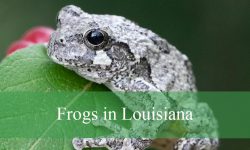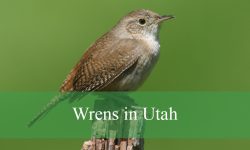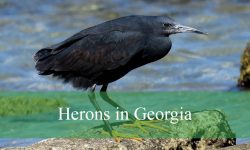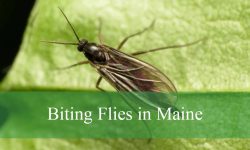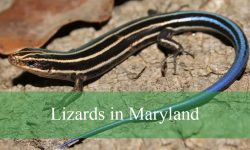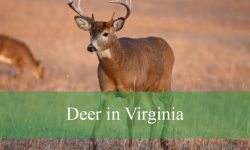Florida Spiders are a diverse and essential part of the state’s ecosystem, found in backyards, forests, and even inside homes. With a wide variety of species, Spiders in Florida range from harmless orb-weavers to venomous black widows. Understanding these arachnids is crucial for both nature lovers and residents looking to identify which spiders are safe and which should be avoided.
This guide covers 72 different Florida Spiders, providing pictures and key identification details. Whether you’re spotting a jumping spider on your porch or a wolf spider in your garden, recognizing Spiders in Florida can help you appreciate their role in controlling insect populations while ensuring your safety.
From large, web-spinning species to stealthy hunters that roam the ground, Florida Spiders thrive in various habitats. Some prefer the humid woodlands, while others adapt well to urban areas. By learning more about Spiders in Florida, you’ll gain a deeper appreciation for these fascinating creatures and understand how to coexist with them.
Different Types of Florida Spiders
Orchard Orb Weaver
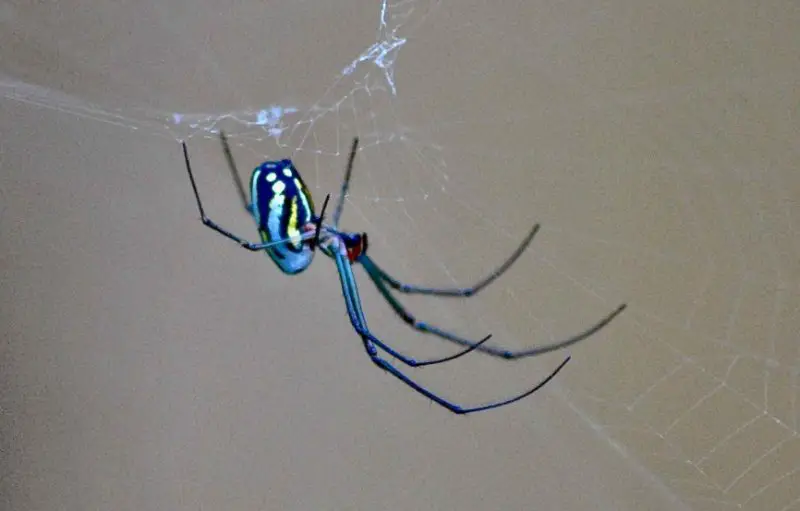
The Orchard Orb Weaver (Leucauge venusta) is a social spider known for forming loose colonies where individuals maintain structured web positions. While they do not actively cooperate, their close proximity allows them to benefit from shared protection and increased web efficiency. Larger individuals often claim higher, more exposed positions, while smaller ones settle lower in the colony’s structure.
One of the most distinctive features of the Orchard Orb Weaver is its striking abdominal pattern. Its belly is marked with three distinct parallel lines that sometimes curve inward before running parallel again. These intricate markings can vary from spider to spider, giving each individual a slightly unique appearance.
Despite their small size, these spiders build strong, symmetrical orb webs to capture a variety of flying insects. Their preference for shaded areas in orchards and forests makes them a common sight in such locations.
Yellow Garden Spider
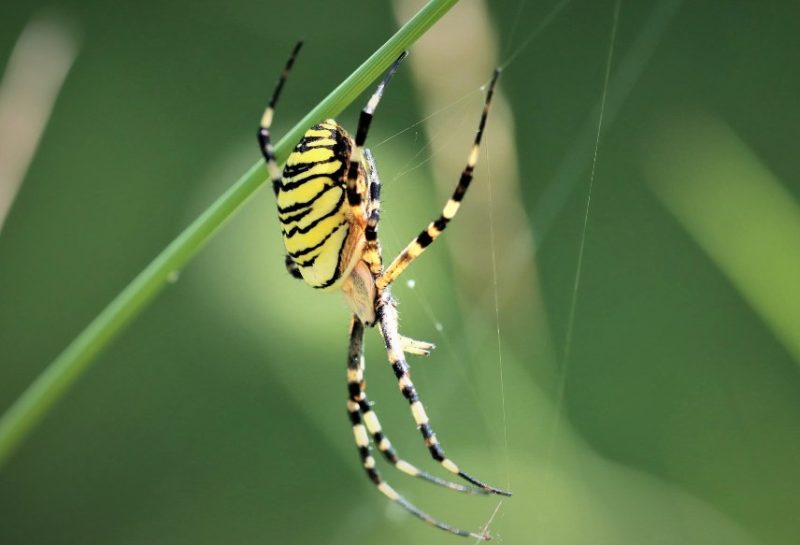
The Yellow Garden Spider (Argiope aurantia) is one of the most recognizable orb-weaving spiders, thanks to its bold black and yellow patterned abdomen and nearly pure white cephalothorax. These striking colors serve as a form of aposematism, warning potential predators that the spider may be toxic or unpalatable. While not actually dangerous, this visual deterrent helps protect them from birds and other threats.
Females are significantly larger than males, sometimes reaching up to 2.5 cm in body length, with legs extending even further. Males, by comparison, are much smaller and tend to stay on the outskirts of the female’s web, cautiously approaching only during mating season.
One of the Yellow Garden Spider’s most remarkable behaviors is its creation of a zigzagging silk structure in the center of its web, known as a stabilimentum. The purpose of this structure remains debated, with theories suggesting it helps attract prey, prevent birds from flying into the web, or even provide camouflage for the spider itself.
Despite their somewhat intimidating size, these spiders are completely harmless to humans. Their bite is no more painful than a bee sting and is unlikely to cause any serious reactions.
Green Lynx Spider
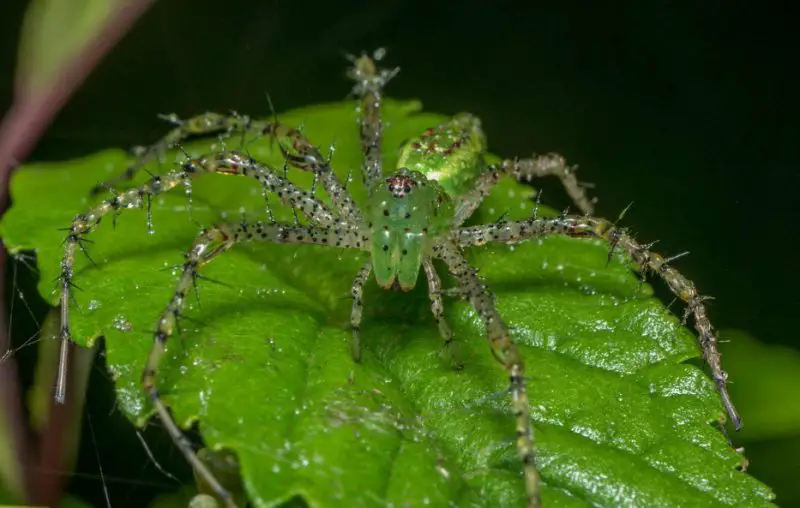
The Green Lynx Spider (Peucetia viridans) is a fast-moving, highly skilled hunter known for its vivid green body, yellow legs, and striking red markings near its eyes. This species exhibits pronounced sexual dimorphism, with females reaching up to 2.2 cm in body length, while males are noticeably smaller and more slender.
One of the most distinctive features of the Green Lynx Spider is its elongated abdomen, which bears six forward-pointing chevrons. Its legs are adorned with alternating yellow and black bands, enhancing its camouflage among foliage. Interestingly, gravid females can gradually shift their coloration, darkening their hue to better blend with their surroundings. This adaptive trait helps them avoid detection from predators while protecting their eggs.
Unlike many web-building spiders, the Green Lynx Spider is an ambush predator, relying on its speed and agility to capture unsuspecting prey. It often perches on flowers and vegetation, preying on pollinating insects such as bees and butterflies. Though non-aggressive toward humans, it may bite if handled, delivering a venomous but non-lethal sting.
Magnolia Green Jumping Spider
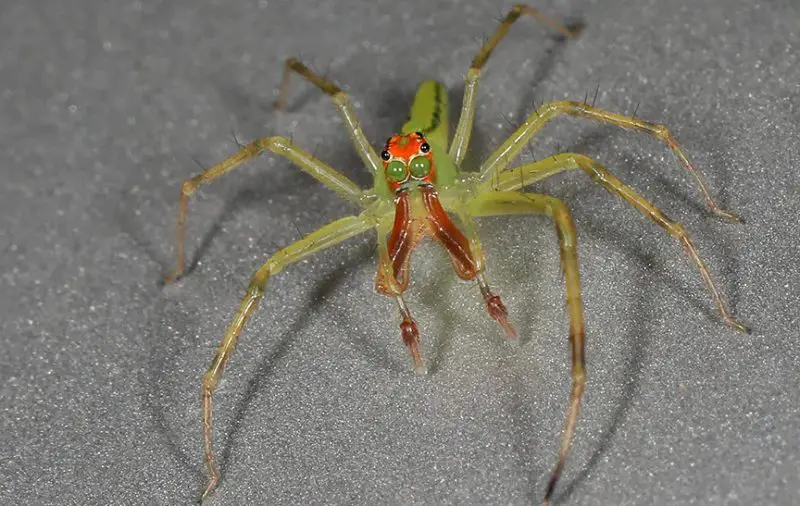
The Magnolia Green Jumping Spider (Lyssomanes viridis) is a small but highly active hunter commonly found in the southeastern United States. Measuring around 8 mm in length, this spider is known for its translucent green body, which provides excellent camouflage among leaves and stems. A distinctive fringe of red, orange, yellow, or white scales encircles the crown of its head, adding to its striking appearance.
Unlike orb-weaving spiders, the Magnolia Green Jumping Spider does not build webs to capture prey. Instead, it relies on its exceptional vision and powerful jumping ability to ambush insects. With legs that are disproportionately long compared to its body, it can leap distances up to four times its own length, making it an efficient and precise predator.
Another notable feature of this species is its large, iridescent chelicerae, or mouthparts, which can appear metallic green or blue under certain lighting. These fangs serve both a functional and social role, being used for prey capture as well as courtship displays and territorial disputes.
Spinybacked Orbweaver
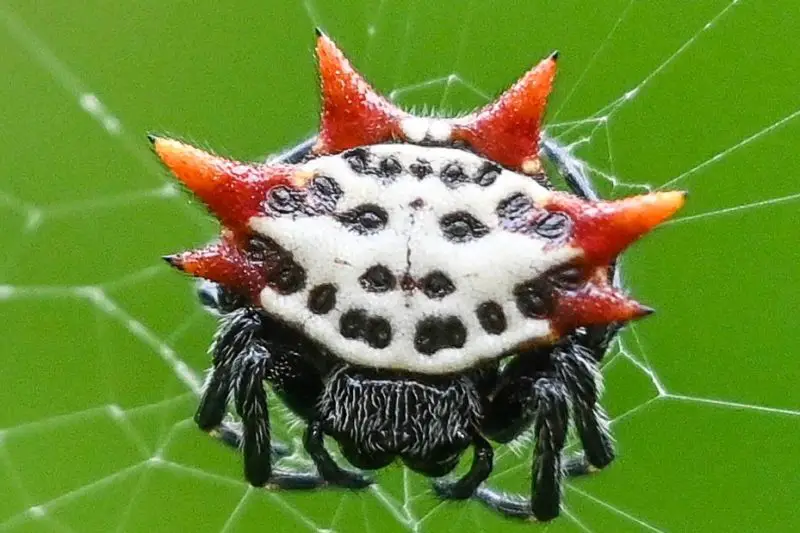
The Spinybacked Orbweaver (Gasteracantha cancriformis) is a small yet visually striking spider known for its vivid coloration and distinctive, shell-like abdomen adorned with six prominent spines. These spines, along with its somewhat flattened body, contribute to its crab-like appearance, earning it the nickname “crab spider.” Unlike true crab spiders (Thomisidae), which do not build webs, the Spinybacked Orbweaver is a skilled web architect, constructing large, circular orb webs to capture flying insects.
Females are significantly larger than males and exhibit bright colors such as white, yellow, or red, contrasted with black spots and bold spines. Males, on the other hand, are much smaller and duller in appearance. These spiders are non-aggressive and pose no threat to humans. When disturbed, they are more likely to drop from their web or retreat rather than bite. Even if a bite occurs, it is mild and harmless.
Golden Silk Spider
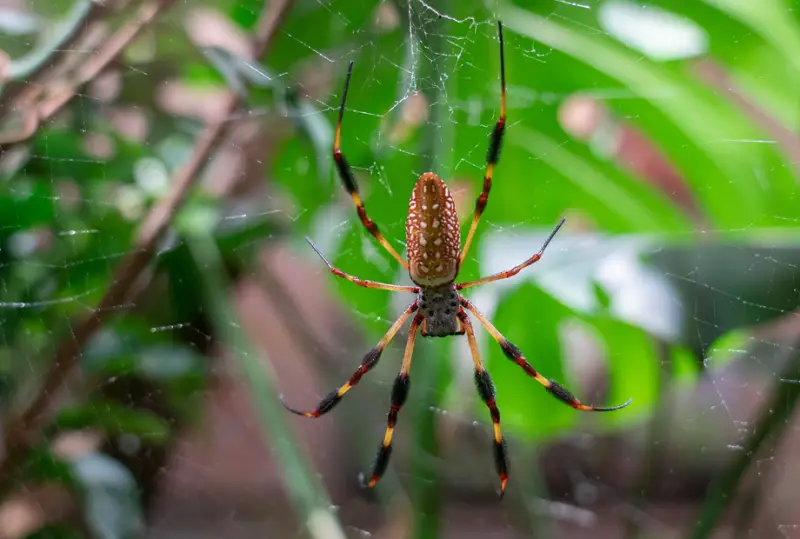
The Golden Silk Spider (Trichonephila clavipes), also known as the Banana Spider, is one of the largest non-tarantula spiders in North America. Females can reach up to 4 cm in body length, with even longer legs stretching beyond 12 cm. Their cephalothorax has a silver-white sheen, while their elongated abdomen ranges from orange to brown, adorned with two rows of pale spots. As they mature, these spots can shift in hue, adding to their distinctive appearance.
Males are considerably smaller, often only reaching a quarter of the size of the females, and their coloration is much more subdued, featuring dark brown tones. This extreme size difference between sexes is a form of sexual dimorphism, ensuring that the larger, more vibrant females dominate the web while the males remain inconspicuous.
One of the most remarkable traits of this species is its web, which is spun from golden-hued silk, giving it a shimmering, sunlit appearance. This strong silk has been studied for its incredible tensile strength, rivaling even some synthetic fibers. Though their large size can be intimidating, Golden Silk Spiders are not aggressive and only bite in self-defense. Their bite is mild, comparable to a bee sting, and does not pose any medical threat to humans.
Mabel Orchard Orbweaver
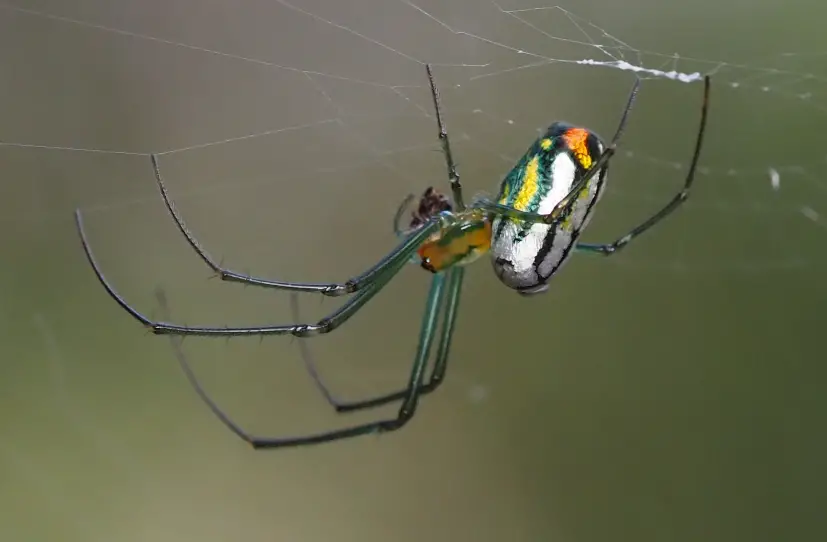
The Mabel Orchard Orbweaver (Leucauge argyrobapta) is a slender, long-jawed orb-weaving spider commonly found in the southeastern United States, particularly in Florida. Its delicate body and vibrant coloration make it one of the more aesthetically pleasing orb weavers. The spider’s greenish legs and silvery abdomen, often marked with yellow and black patterns, allow it to blend seamlessly into its surroundings.
These spiders thrive in a variety of environments, from dense woodlands to urban gardens and agricultural fields. Their webs are often suspended in low vegetation, where they remain hidden from predators.
An intriguing aspect of this species is its role in a unique interaction with parasitic wasps. Some Mabel Orchard Orbweavers have been observed carrying wasp larvae on their bodies, serving as living hosts until the larvae mature. While this phenomenon is rare, it highlights the complex relationships between different species in the natural world.
Gray Wall Jumping Spider
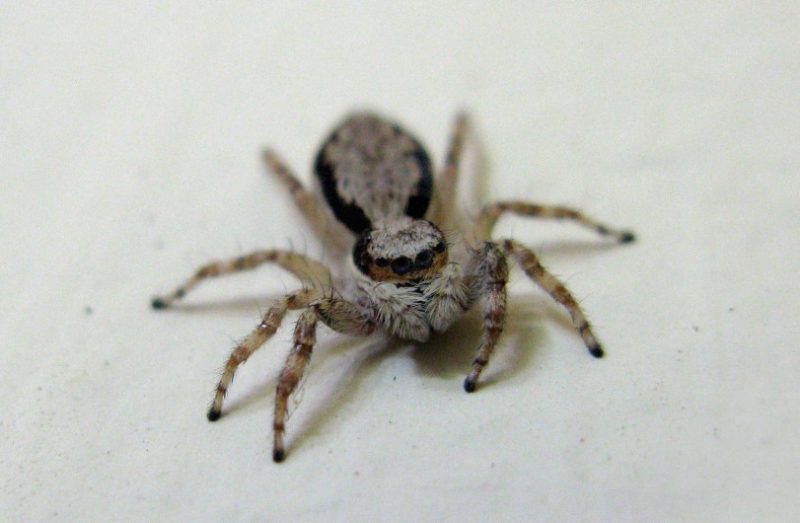
The Gray Wall Jumping Spider (Menemerus bivittatus) is a common urban-dwelling species recognized for its flat, elongated body covered in short white and gray hairs. Measuring up to 9 mm, it is particularly well adapted to blending into man-made structures such as walls, fences, and window sills.
Males and females display notable differences in coloration. Males are slightly smaller and feature a distinct black dorsal stripe running along their bodies. Females, on the other hand, tend to have a more mottled brown coloration, interspersed with two bold black bands and a thin white stripe that runs along the length of the abdomen. This subtle patterning helps them remain inconspicuous against textured surfaces.
Like other jumping spiders, the Gray Wall Jumping Spider is an active predator that relies on its keen eyesight to stalk and pounce on insects. It does not spin a capture web but instead constructs a small silken retreat where it rests and lays eggs. Despite their proximity to human dwellings, these spiders are harmless and often beneficial in controlling insect populations.
Tropical Orbweaver
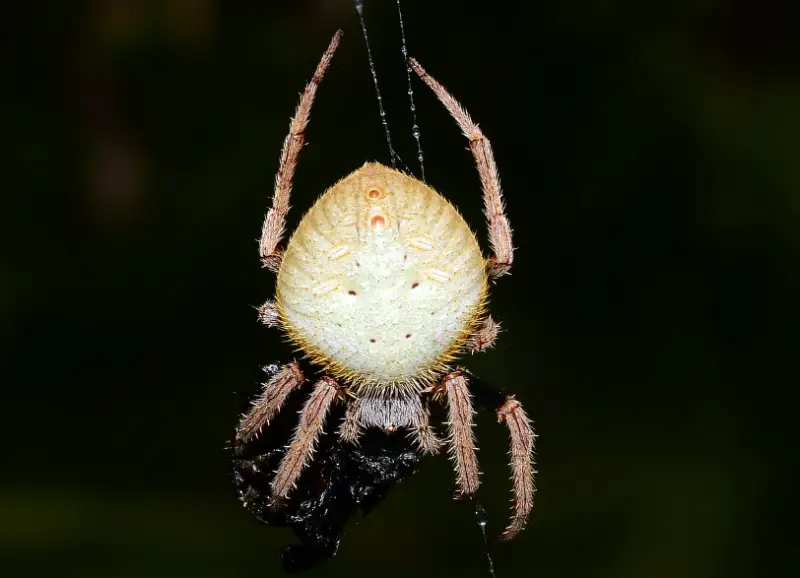
The Tropical Orbweaver (Eriophora ravilla) is a widespread species in Florida and other warm climates, known for its significant variation in color and markings. While some individuals display intricate patterns of orange, brown, or gray, others appear completely unmarked, making identification challenging.
Females are considerably larger than males and are responsible for constructing the characteristic circular webs used to ensnare flying insects. These webs are often built at night and taken down by morning, reducing the risk of detection by predators.
Although their size and nocturnal habits might make them seem intimidating, Tropical Orbweavers are entirely harmless to humans. Their venom is mild, and their bite is no more painful than a bee sting. When disturbed, they are more likely to retreat than show aggression, making them a non-threatening presence in gardens and wooded areas.
Regal Jumping Spider
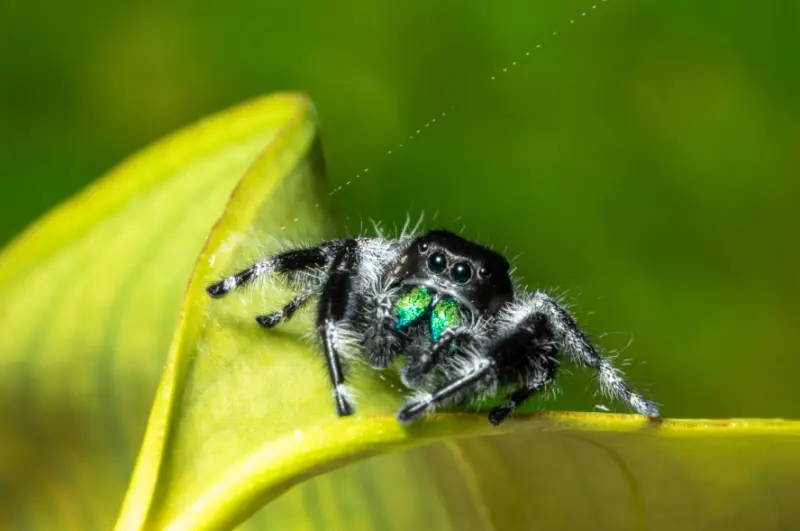
The Regal Jumping Spider (Phidippus regius) is one of the largest and most charismatic jumping spiders in North America. Females can grow up to 2.2 cm in length, making them significantly bulkier than most other members of the jumping spider family. Males are slightly smaller and easily recognizable by their deep black coloration, accented with bold white stripes and spots.
Females, in contrast, exhibit a greater range of colors, including vibrant orange, gray, and even tan shades. A particularly endearing feature of this species is the arrangement of three distinct spots on the abdomen, often resembling a smiley face.
Like all jumping spiders, the Regal Jumping Spider possesses exceptional vision, which it uses to track and ambush prey. It does not rely on a web for hunting but instead employs quick, calculated jumps to capture insects mid-air. Despite its somewhat intimidating size and appearance, this species is docile and rarely bites humans unless provoked.
This spider is also known for its inquisitive nature, often turning its head to observe movement around it. Its large, forward-facing eyes give it a curious and expressive look, making it a favorite among spider enthusiasts and researchers alike.
Twin-flagged Jumping Spider
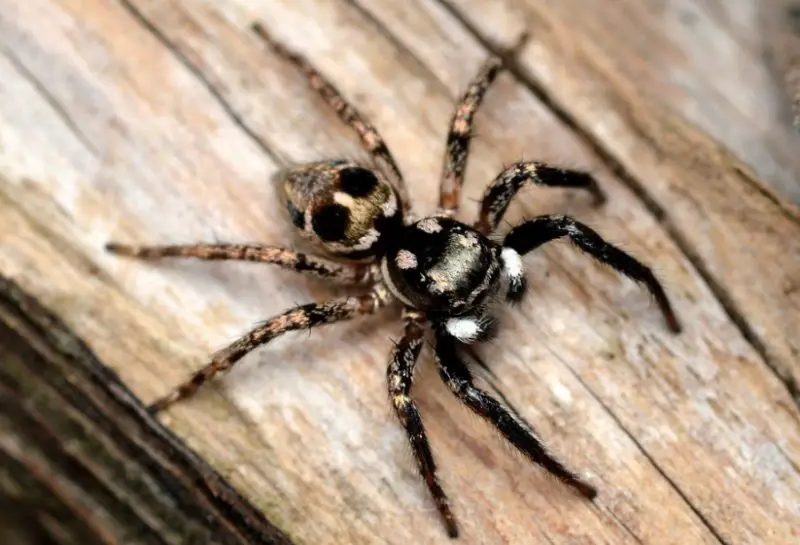
The Twin-flagged Jumping Spider (Anasaitis canosa) is a small yet agile hunter, named for its distinctive front appendages that resemble an extra pair of legs. These structures, however, are not used for movement but serve as sensory tools, helping the spider detect vibrations and navigate its surroundings with precision.
This species is predominantly black, with up to four white markings on its head and a sharp, pointed abdomen featuring a single white dash in the center. As an ambush predator, it relies on its exceptional jumping ability to pounce on unsuspecting prey rather than building webs to capture food. Its keen eyesight allows it to track and stalk insects with remarkable accuracy before striking with a rapid, well-timed leap.
Silver Garden Orbweaver
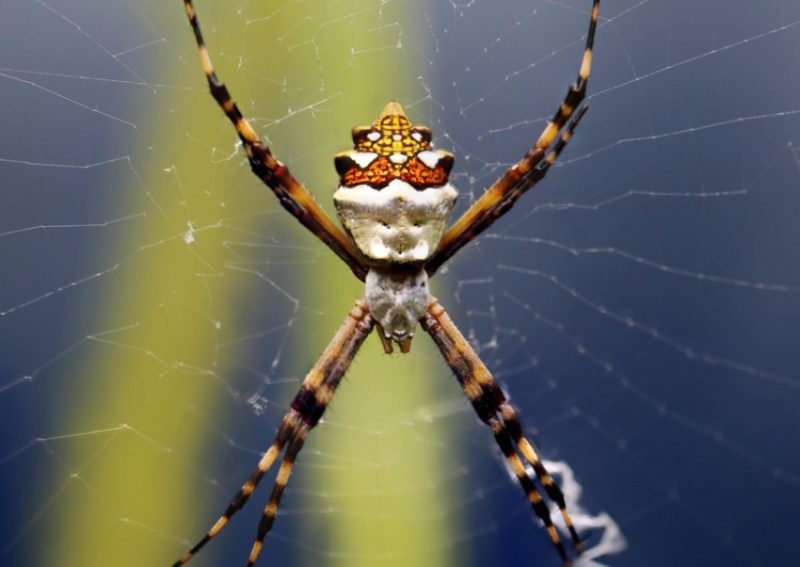
The Silver Garden Orbweaver (Argiope argentata) is an eye-catching species known for its reflective, silvery appearance, which plays a role in both camouflage and attracting prey. Females of this species can reach up to 1.2 cm in body length, making them nearly three times larger than the much smaller males.
One of the most fascinating characteristics of this spider is its ability to produce UV-reflective silk, which makes its web more visible to certain insects. This unique adaptation may help lure prey by mimicking the way flowers reflect ultraviolet light, drawing insects toward the web.
Another notable feature of the Silver Garden Orbweaver is its two sets of eyes, enhancing its ability to detect movement in its surroundings. While its large size and bold web designs may make it seem intimidating, this spider is completely harmless to humans and plays a beneficial role in controlling insect populations.
Red-femured Spotted Orbweaver
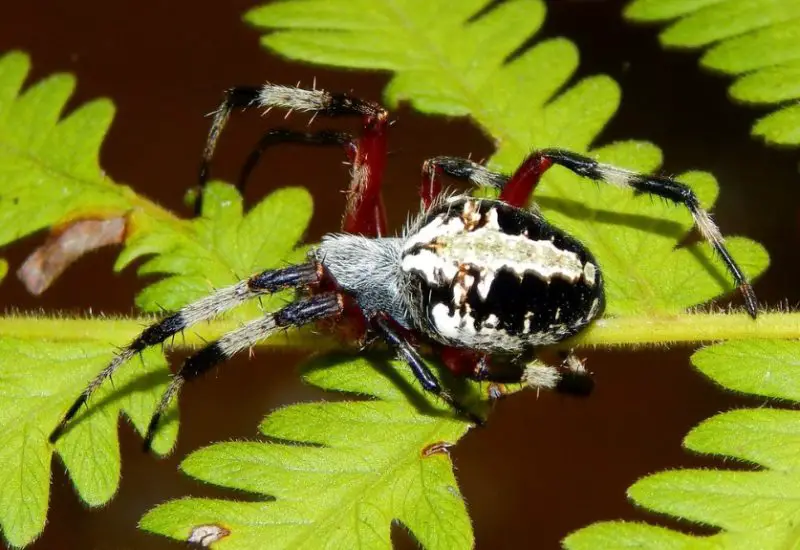
The Red-femured Spotted Orbweaver (Neoscona domiciliorum) is a visually striking species, easily recognized by its bright red femurs, which contrast sharply against its pale gray and black-banded legs. Its abdomen is dark with four distinctive white spots and a reddish tip, further adding to its unique appearance.
Females grow significantly larger than males, reaching up to 1.6 cm in body length, while males remain smaller at around 8 mm. These spiders are skilled web builders, creating intricate, circular webs at night to capture flying insects. At dawn, they often dismantle their webs to avoid detection from predators.
Despite their somewhat intimidating look, Red-femured Spotted Orbweavers are not aggressive and pose no threat to humans. Their venom is mild, and they generally avoid contact with people, preferring to remain hidden in dense vegetation.
Pantropical Huntsman Spider
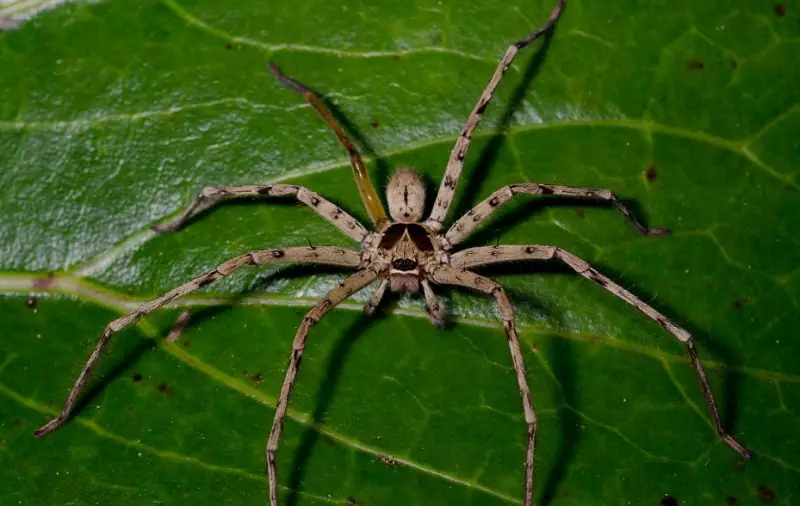
The Pantropical Huntsman Spider (Heteropoda venatoria) is an impressive, fast-moving species often mistaken for a tarantula due to its large size. With a leg span that can reach up to 30 cm, it is one of the largest spiders commonly encountered in warm regions worldwide. Its body is typically brown or gray with black and white markings, and its mouthparts feature distinct red patches.
Unlike web-building spiders, the Pantropical Huntsman is an active hunter, using its speed and agility to chase down prey rather than relying on a web. It is frequently found in garages, sheds, and other undisturbed areas, where it helps control insect populations, particularly cockroaches and other household pests.
Although its size and rapid movements may startle people, this spider is not dangerous to humans. A bite is rare and typically results in mild discomfort, similar to a bee sting. These spiders prefer to flee rather than confront threats, making them a non-aggressive presence in homes and gardens.
Brown Widow
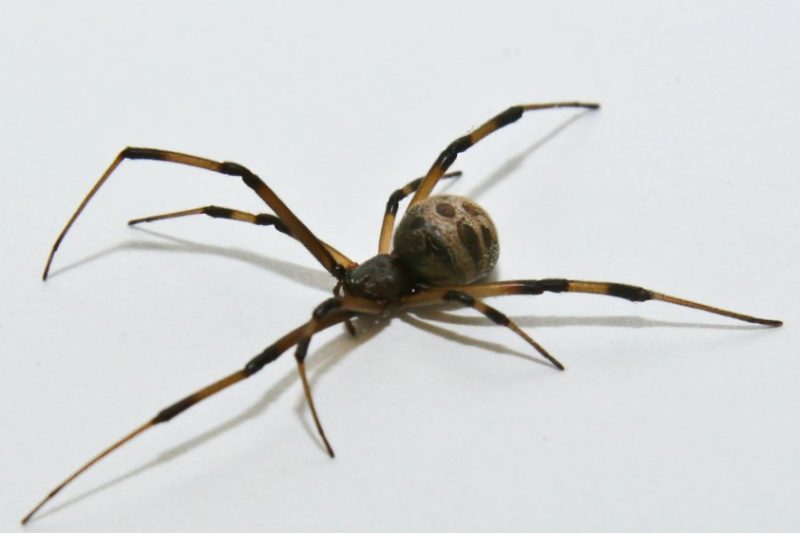
The Brown Widow (Latrodectus geometricus) is a close relative of the infamous Black Widow but is generally considered less harmful. It can be identified by its lighter coloration, which ranges from dark brown to gray, and the distinctive orange or yellow hourglass marking on its abdomen. The body is also adorned with intricate geometric patterns, making it distinguishable from its more notorious cousin.
While the venom of the Brown Widow affects the nervous system, it is much milder than that of the Black Widow. A bite may cause localized pain, swelling, and irritation, but severe reactions are rare. However, individuals with allergies or sensitivity to spider venom should seek medical attention if symptoms worsen.
Brown Widows are known for their secretive nature, often hiding in sheltered locations such as under outdoor furniture, inside mailboxes, and beneath eaves. Unlike Black Widows, they are less aggressive and tend to retreat rather than bite when disturbed.
Six-spotted Fishing Spider
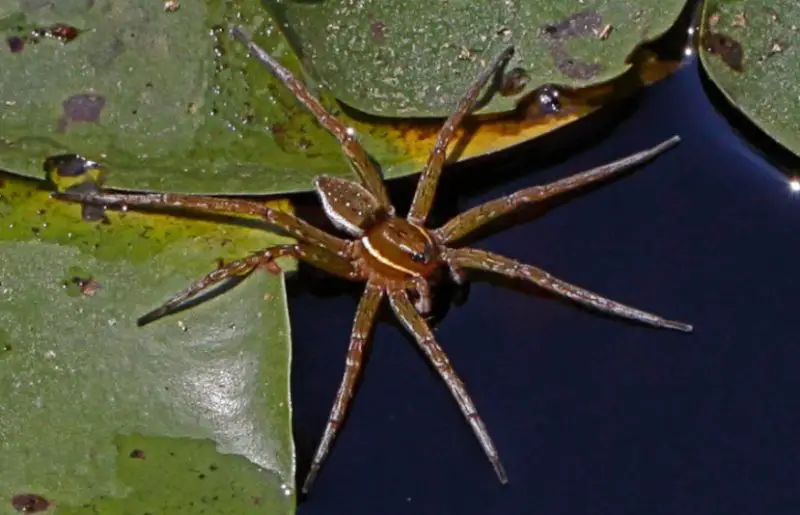
The Six-spotted Fishing Spider (Dolomedes triton) is a remarkable aquatic predator known for its ability to move effortlessly across the surface of water. It has a brown to gray body with a pale underside adorned with six distinct dark spots, a feature that gives the species its name.
Females can grow impressively large, reaching up to 6 cm in body length, while males remain much smaller at around 1.3 cm. These spiders use surface tension to their advantage, skating across ponds and streams in search of prey. They primarily feed on aquatic insects, but larger individuals have been observed capturing small fish and tadpoles. Their excellent vision and swift reflexes make them highly effective hunters.
Banded Garden Spider
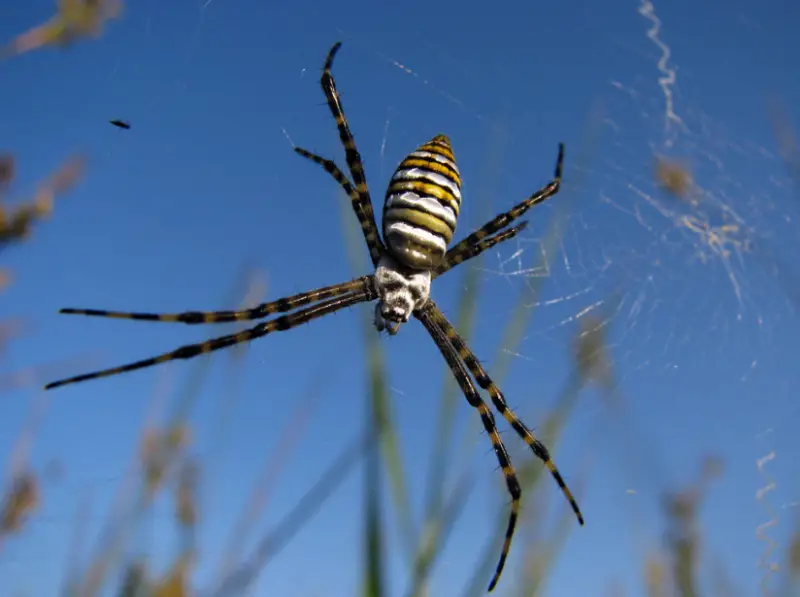
The Banded Garden Spider (Argiope trifasciata), also known as the Banded Orb-Weaving Spider, is a striking species commonly found in North America. It is most visible during the fall when mature individuals build large, circular webs—some reaching up to 60 cm in diameter—across gardens, fields, and shrubs.
These spiders display a wide range of coloration, from black with white and yellow bands to red with white bands, often becoming darker as they age. Females are significantly larger than males and typically hang upside down in the center of their webs, patiently waiting for prey to get ensnared. Males, on the other hand, stay on the edges of the female’s web and cautiously approach during mating.
While these spiders may bite if provoked—especially when guarding their egg sacs—their venom is harmless to humans, causing only mild irritation.
Arabesque Orbweaver
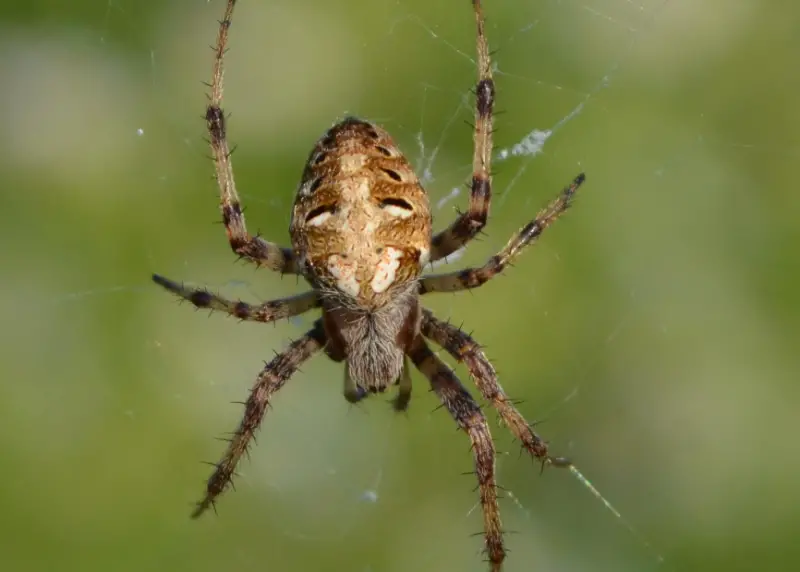
The Arabesque Orbweaver (Neoscona arabesca) is a common and widespread species in North America, named for the intricate, swirling patterns that adorn its abdomen. This small but beautifully marked spider thrives in diverse environments, including gardens, forests, fields, and even human-made structures.
Females typically reach up to 7 mm in body length, with males slightly smaller at around 6 mm. Despite their delicate appearance, these spiders are efficient web-builders, creating near-perfect circular webs that capture flying insects. They are non-aggressive and only bite when provoked, with venom that poses no medical significance beyond mild discomfort similar to a bee sting.
Southern House Spider
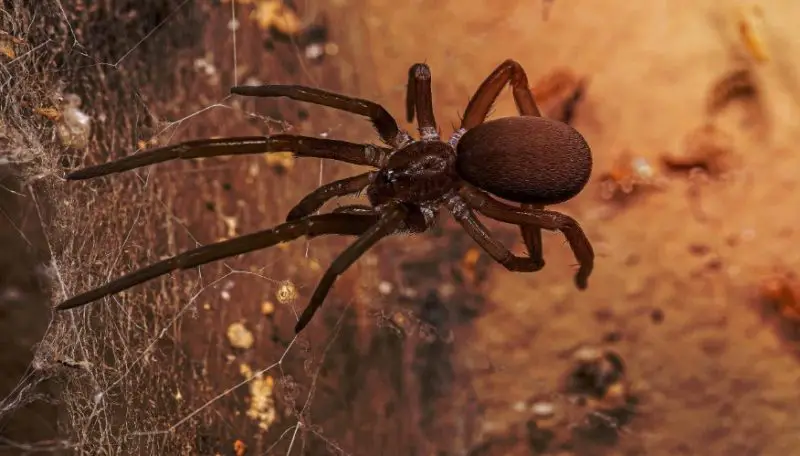
The Southern House Spider (Kukulcania hibernalis) is frequently mistaken for the Brown Recluse due to its size and body shape, but it lacks the distinctive violin marking found on its more venomous counterpart. Males are leaner and possess longer legs, while females are bulkier, with a darker brown or nearly black appearance.
Preferring undisturbed spaces, these spiders are commonly found in barns, attics, wall crevices, and other sheltered areas throughout the southern United States. While males tend to wander in search of mates, females remain hidden in their silken retreats. If disturbed, they may attempt to bite, but their small fangs often struggle to penetrate human skin, making them effectively harmless.
White-banded Fishing Spider
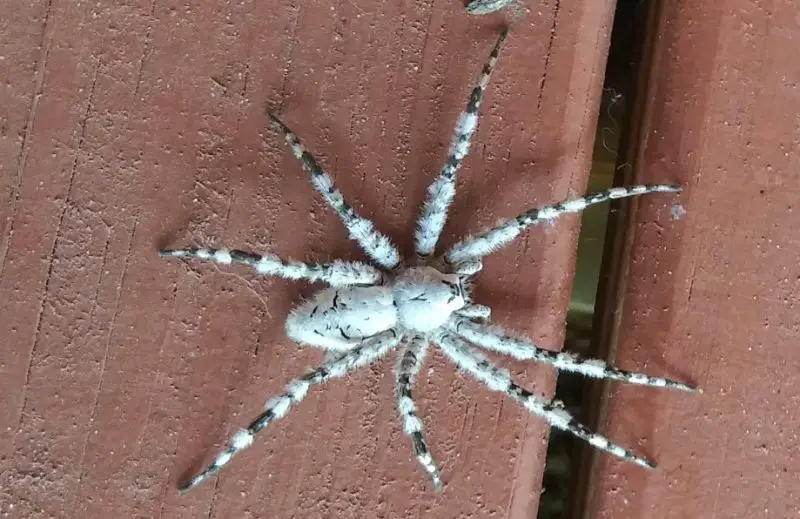
The White-banded Fishing Spider (Dolomedes albineus) is a fascinating species belonging to the nursery web spider family. Found near ponds, streams, and wetlands, it is well adapted to an aquatic lifestyle. The spider’s hydrophobic hairs allow it to walk on water, and it can even dive beneath the surface by trapping air bubbles against its body, enabling it to ambush small aquatic creatures.
Females can grow up to 2.3 cm, while males are slightly smaller at around 1.8 cm. Their coloration varies from brown to moss green, often featuring distinct dark markings. A defining characteristic of this species is the white band that runs below its eyes and along the sides of its jaws.
Though not aggressive, a bite from the White-banded Fishing Spider may cause localized pain and swelling, though it poses no serious danger to humans. These spiders play an essential role in controlling insect populations in wetland ecosystems.
Wolf Spider
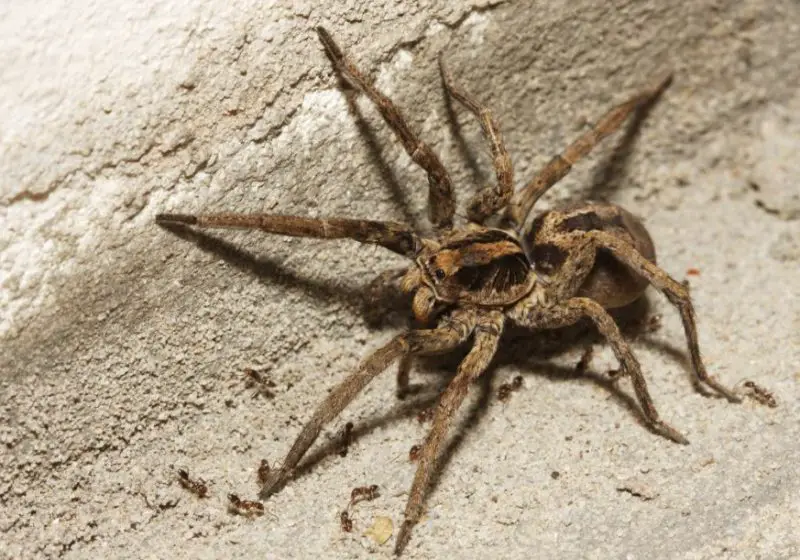
The Wolf Spider (Lycosidae) is a ground-dwelling predator native to eastern North America. Unlike web-building spiders, it actively hunts prey using its keen eyesight and impressive speed. It prefers dry, sandy habitats such as grasslands, forests, and even urban areas where it can blend into leaf litter or soil.
These spiders are relatively small, with females reaching about 1.8 cm in body length. Females are pale yellow with a distinctive dark V-shaped marking on their underside, while males are more uniformly pale, featuring yellow patches on their carapace. Despite their somewhat intimidating appearance, they are harmless to humans and generally avoid confrontation.
Long-bodied Cellar Spider
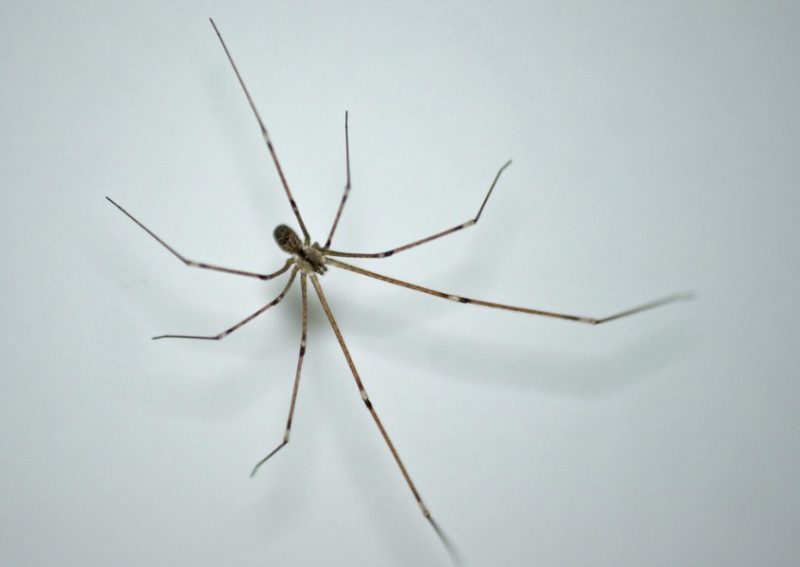
Commonly referred to as the Daddy Long-Legs Spider, the Long-bodied Cellar Spider (Pholcus phalangioides) is instantly recognizable due to its tiny body and incredibly long, thin legs. These delicate-looking spiders are frequently found in dark, undisturbed areas such as basements, attics, and cellars, where they spin messy, irregular webs to trap their prey.
Females grow to about 8 mm in body length, while males are slightly smaller at around 6 mm. Their legs, however, can reach up to 5 cm, making them roughly six times longer than their bodies. Their coloration ranges from gray to light brown, with a dark marking on their back. They are known to vibrate rapidly in their webs when threatened, making them difficult for predators to spot.
Common Hentz Jumping Spider
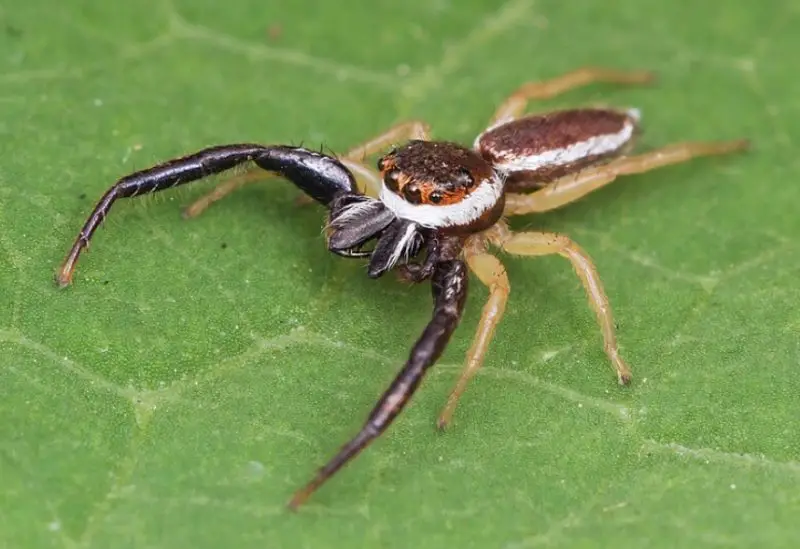
The Common Hentz Jumping Spider (Hentzia palmarum) is a small but highly agile hunter that relies on quick, powerful leaps rather than webs to capture its prey. These spiders are excellent climbers and often found in leaf litter, shrubs, and even indoors, where they ambush insects with remarkable precision.
This species is notable for its unique coloration. Its front legs are dark red, contrasting with its yellow hind legs, while its face is adorned with bright orange hairs. The spider’s chelicerae (mouthparts) are red and can sometimes be mistaken for extra legs. The abdomen features distinct dark bands that provide additional camouflage among foliage.
Though they are fast and sometimes appear bold, these spiders are harmless to humans and will typically retreat if disturbed.
Southern Black Widow
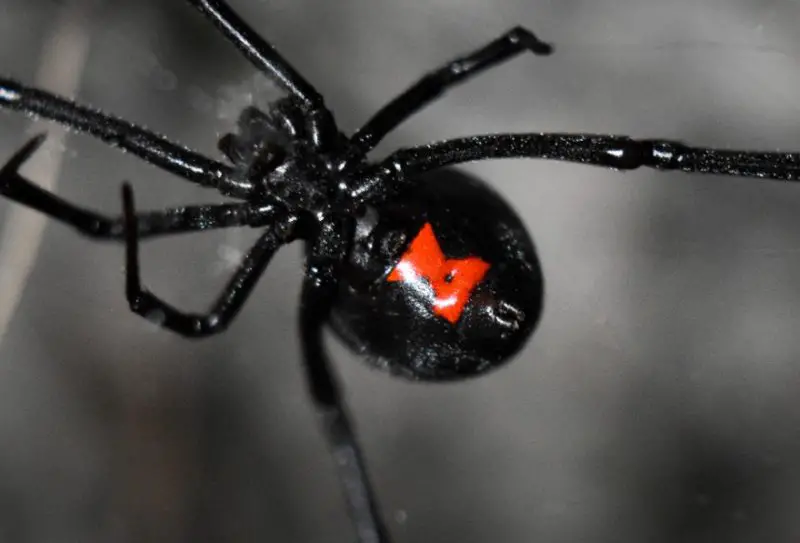
The Southern Black Widow (Latrodectus mactans) is one of the most well-known spiders due to its potent venom and iconic appearance. While both males and females have unique color patterns, only mature females pose a potential threat to humans.
Females are jet black with a striking red hourglass marking on the underside of their abdomen. Males and juveniles, however, look entirely different, featuring colors ranging from gray to purple, with white stripes and small orange spots along their bodies.
Black Widow venom contains alpha-latrotoxin, which affects the nervous system, causing muscle pain, cramps, and other neurological symptoms. However, despite around 2,000 reported bites each year, fatalities are extremely rare. Medical treatment is highly effective, and most symptoms subside within a few days. These spiders are reclusive and typically bite only in self-defense.
Pantropical Jumping Spider
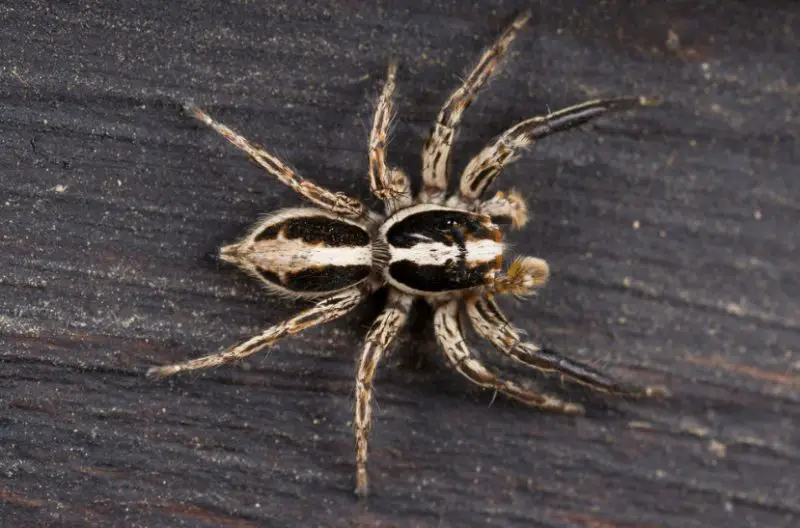
The Pantropical Jumping Spider (Plexippus paykulli) is a bold, fast-moving species known for its exceptional vision and agility. These spiders are found in tropical and subtropical regions and are frequently encountered near human structures, including windowsills and walls, where they actively hunt for insects.
Females can grow up to 1.2 cm in body length, while males are slightly smaller at 1.1 cm. Males have a striking black carapace and abdomen with a broad, light-colored stripe running along their body, ending in distinct white spots. Females, in contrast, display gray to brown hues with a tan stripe down the abdomen, which often splits into two chevrons. Juveniles closely resemble females before developing their adult coloration.
Rather than relying on webs, these spiders leap onto prey with impressive accuracy, using their strong legs to cover distances many times their body length. Their fearless nature and excellent hunting skills make them one of the more commonly spotted jumping spiders.
Florida Garden Spider
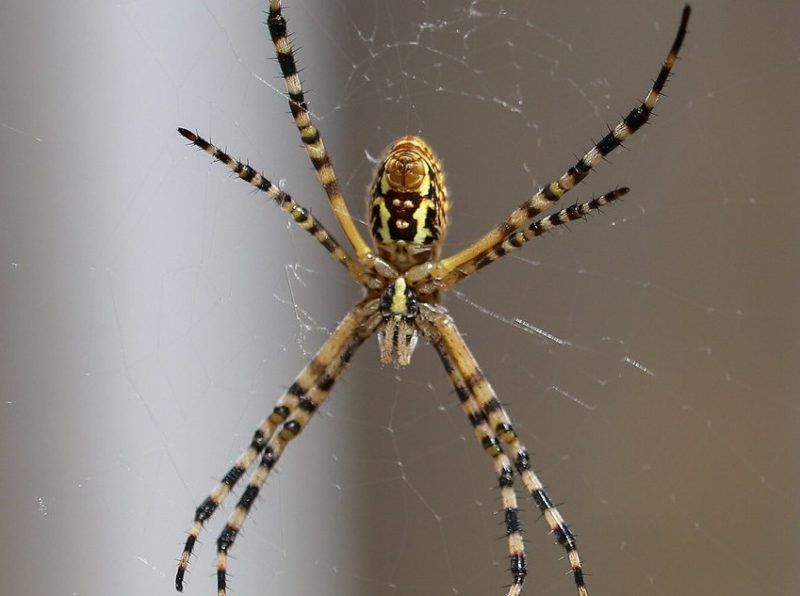
The Florida Garden Spider (Argiope florida), also known as the Florida Argiope, is an impressive orb-weaver native to the southeastern United States, particularly in scrub and open woodland habitats.
These spiders display a striking black and light brown coloration with distinctive banding on their legs. Their most notable feature is their large, intricate webs, which can span over two feet in diameter. Positioned in the center of their webs, they remain motionless during the day, waiting for flying insects to become ensnared. Their webs often include a zigzag-shaped stabilimentum, which may serve to attract prey or deter predators.
Sylvan Jumping Spider
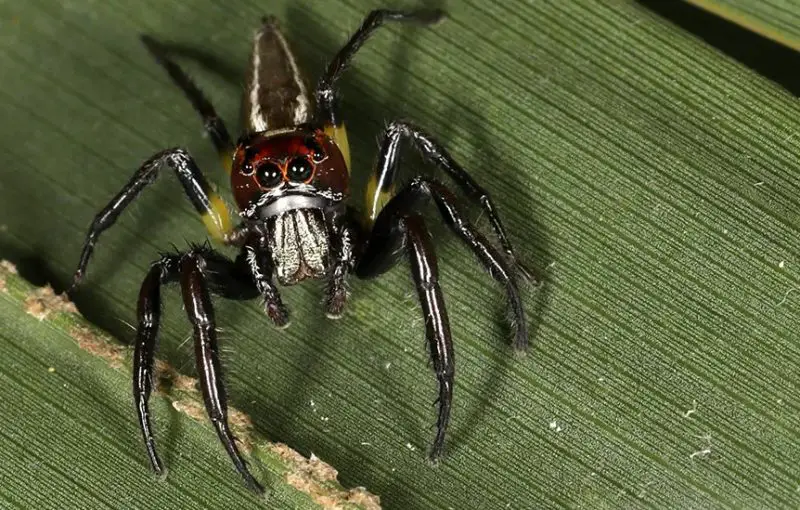
The Sylvan Jumping Spider (Colonus sylvanus) is a medium-sized jumper native to the eastern United States, with a strong presence in Florida’s dense forests.
These spiders reach about 7 mm in length and are expert hunters, using their agility and excellent vision to ambush prey. Rather than spinning webs, they rely on their ability to leap great distances to catch insects and evade predators. Their color varies, but they often exhibit a mix of brown, tan, and gray hues that help them blend into tree bark and foliage.
Reproduction occurs in late spring, with males performing elaborate courtship displays to attract females. Despite their active hunting style, they are harmless to humans.
White-jawed Jumping Spider
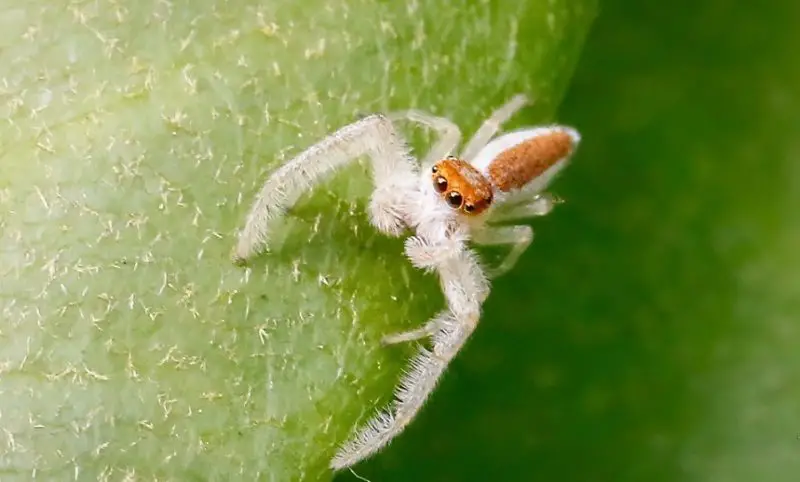
The White-jawed Jumping Spider (Hentzia mitrata) is a tiny, light brown species known for its copper-colored hairs and white markings on its legs and body.
Females grow slightly larger than males, reaching about 3 mm in length. Males are easy to identify due to the red hairs forming a “crown” on their heads. These spiders are quick and alert, making them difficult to spot unless they move.
Due to their small size, they are often overlooked in their natural habitats, which include leaf litter, tree bark, and garden plants. Occasionally, they may enter homes in search of prey, but they pose no threat to humans.
Bold Jumping Spider
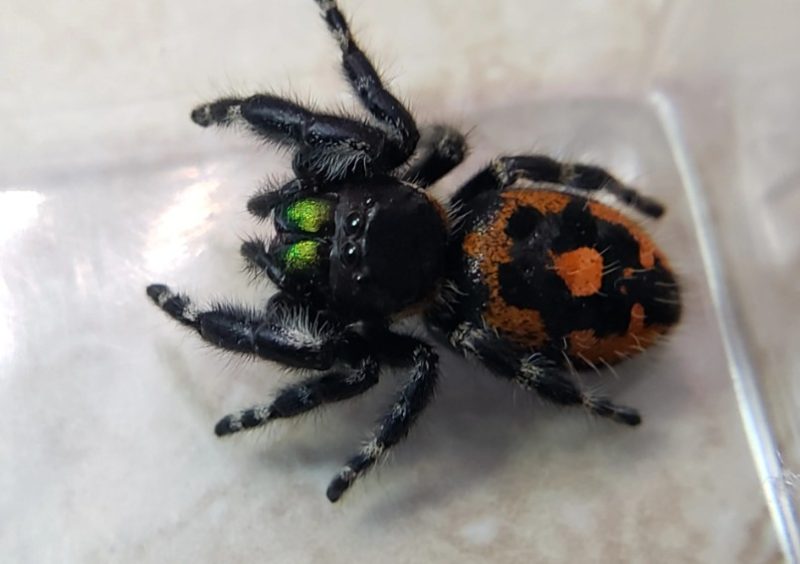
The Bold Jumping Spider (Phidippus audax) is one of the most recognizable jumping spiders in North America, known for its striking appearance and fearless hunting style.
Males range from 4 mm to 1.5 cm, while females grow slightly larger, reaching up to 1.8 cm. These spiders have a black body with distinct white spots and stripes on their legs and abdomen. Juveniles often display bright orange spots, which gradually fade to white as they mature.
In Florida, some populations exhibit red, yellow, or orange markings. Their metallic blue or green chelicerae (mouthparts) add to their distinctive look. Highly curious and active, these spiders are known to turn and observe humans, sometimes raising their front legs in a defensive posture.
Black-tailed Red Sheetweaver
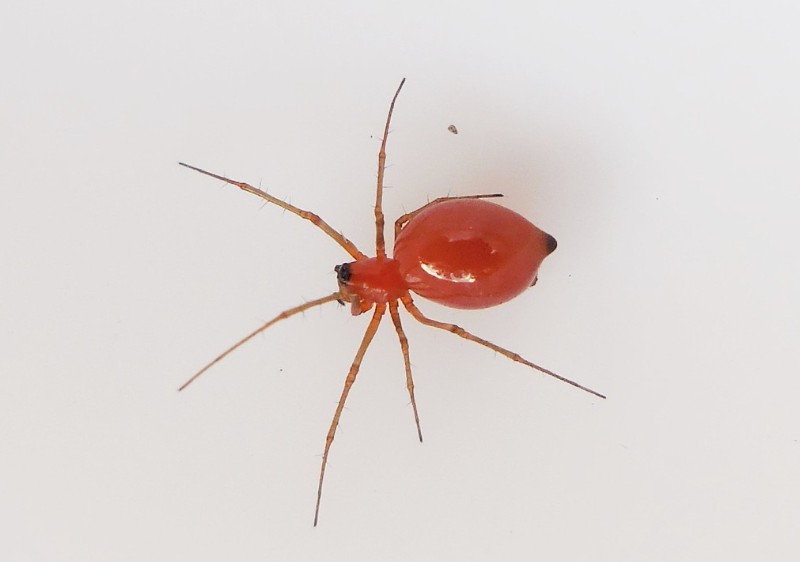
The Black-tailed Red Sheetweaver (Florinda coccinea), also called the Red Grass Spider, is a small yet vibrant species first described in 1896.
Adults are bright red, with females slightly larger than males, reaching about 4 mm in length. They have two distinct rows of eyes and construct horizontal sheet-like webs with vertical stop threads above. When flying insects hit the stop threads, they fall into the web, where the spider quickly subdues them.
Found in grassy fields and low vegetation, these spiders are efficient hunters that play a role in controlling insect populations.
Garden Ghost Spider
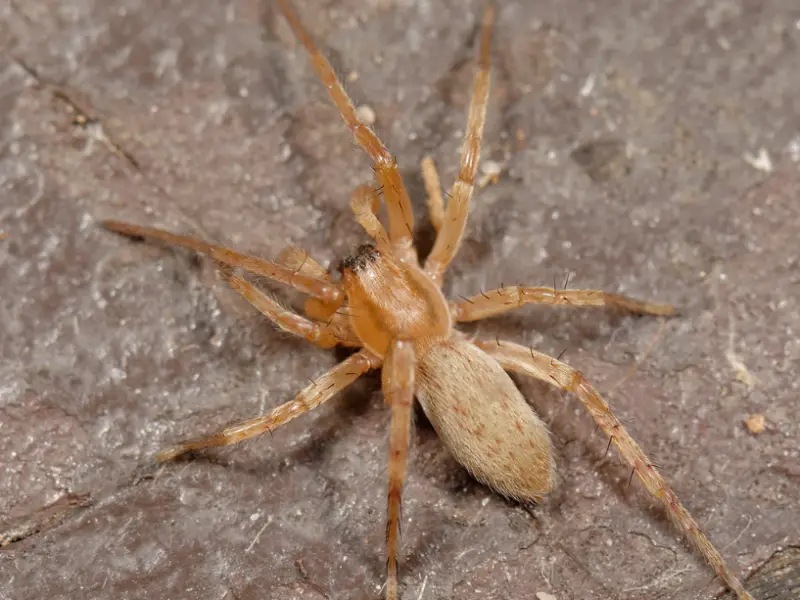
The Garden Ghost Spider (Hibana gracilis) is a nocturnal predator commonly found in Florida’s gardens and wooded areas.
These spiders reach about 1.3 cm in length and have small eyes, an elongated abdomen, and a body coloration that varies from beige to brown, green, or yellow, often with dark markings.
Unlike traditional web-builders, the Garden Ghost Spider does not construct large webs to catch prey. Instead, it relies on stealth and speed, actively hunting at night while taking refuge in silk retreats during the day. Their elusive nature and nocturnal habits make them difficult to spot, despite their widespread presence.
Arrow-shaped Orbweaver
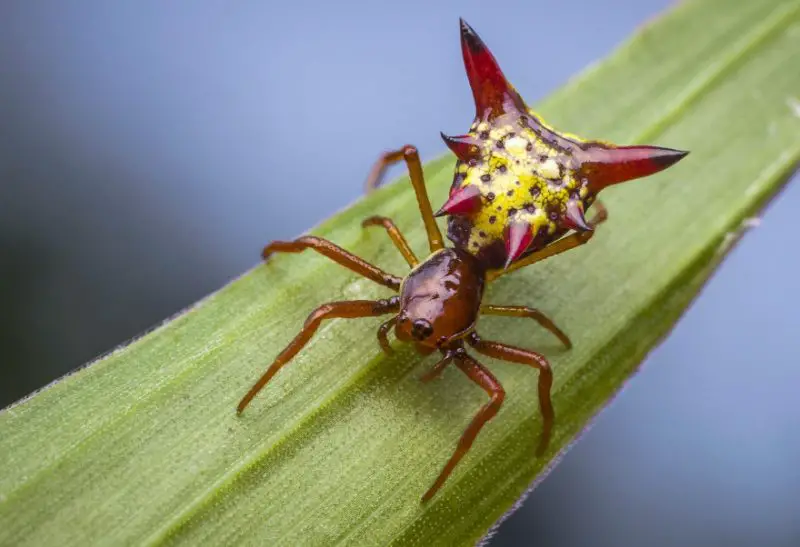
The Arrow-shaped Orbweaver (Micrathena sagittata), also known as the Arrow-shaped Micrathena, is a visually striking spider with a bright yellow abdomen marked by bold black and red patterns. Its unique arrow-like shape sets it apart from other orb-weaving spiders. Females grow up to 9 mm, while males are significantly smaller, reaching around 5 mm.
This species builds intricate, circular webs in forests, gardens, and meadows, where it captures flying insects. Despite its intimidating appearance, the Arrow-shaped Orbweaver is completely harmless to humans and contributes to natural pest control by reducing insect populations.
Selenops submaculosus
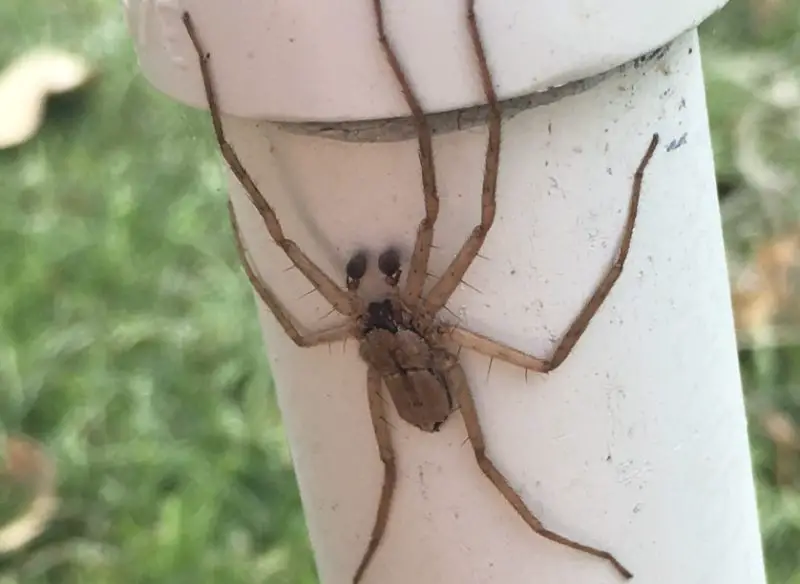
The Selenops submaculosus is a member of the Selenopidae family, commonly found in Florida, as well as parts of the United States, Cuba, the Cayman Islands, and the Bahamas. It is a secretive species, often hiding in crevices and tree bark, making it difficult to observe in the wild.
Little is known about its behavior, but it is not harmful to humans. Like other members of its family, it likely has excellent camouflage abilities and swift movements, allowing it to evade predators and capture prey with precision.
Spotted Orbweaver
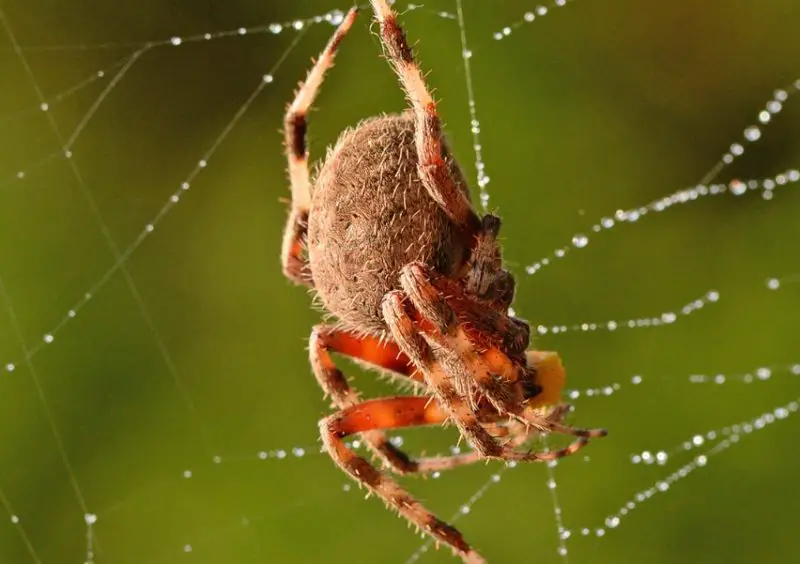
The Spotted Orbweaver (Neoscona crucifera), also called the Hentz Orbweaver or Barn Spider, is a nocturnal spider known for its large, circular webs, which can span up to two feet in diameter. Its coloration varies, ranging from orange and red to yellow and brown, with unique belly markings that differ between individuals.
These spiders thrive in gardens, backyards, forests, and open fields, where they are most active from May to August. Although primarily nocturnal, they are sometimes seen during the day. Harmless to humans, they play an important role in controlling insect populations by capturing moths, flies, and other flying insects.
Arrowhead Orbweaver
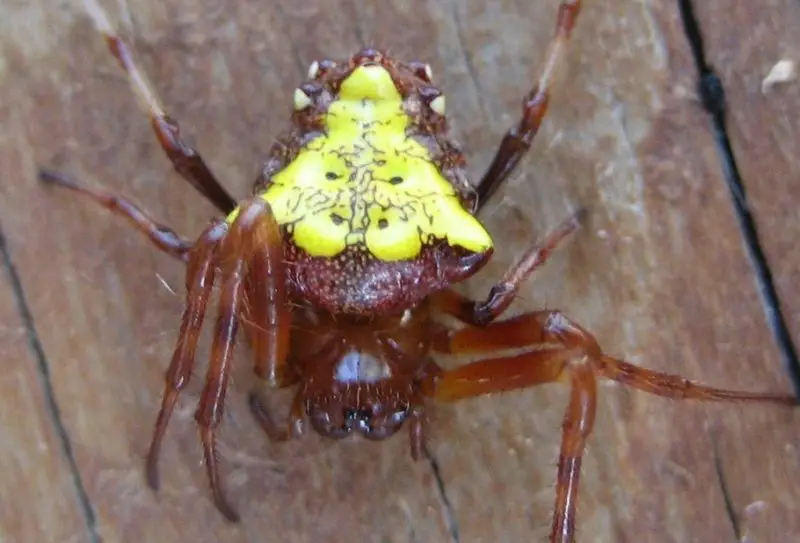
The Arrowhead Orbweaver (Verrucosa arenata), also known as the Triangle Orb Weaver or Arrowhead Spider, is a distinctive orb-weaving species named for its triangular-shaped abdomen. Females grow up to 1.4 cm, while males are smaller, reaching about 6 mm. The abdomen is covered in bright yellow or white, contrasting with the rest of its body.
These spiders construct large, circular webs in woodlands, gardens, and parks, where they trap flying insects. Males are rarely seen except during mating season, while females remain in their webs waiting for prey. Despite their striking appearance, they are harmless to humans and beneficial for natural pest control.
Tan Jumping Spider
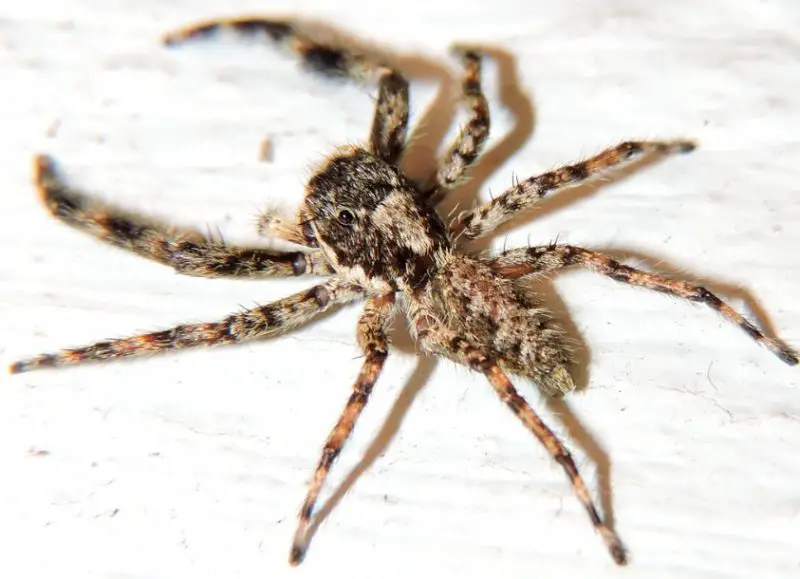
The Tan Jumping Spider (Platycryptus undatus) is a small, agile hunter with a compressed body that helps it hide under tree bark and in narrow crevices. Females grow up to 1.3 cm, while males are slightly smaller at around 9.5 mm. These spiders prefer vertical surfaces such as walls and fences, where they patiently stalk their prey.
Known for their excellent vision and curious nature, they are often unafraid of humans and may even crawl onto a person’s hand. While they are not aggressive, they may bite if accidentally squeezed, though their bite is harmless and causes only mild irritation.
Tropical Tent-web Spider
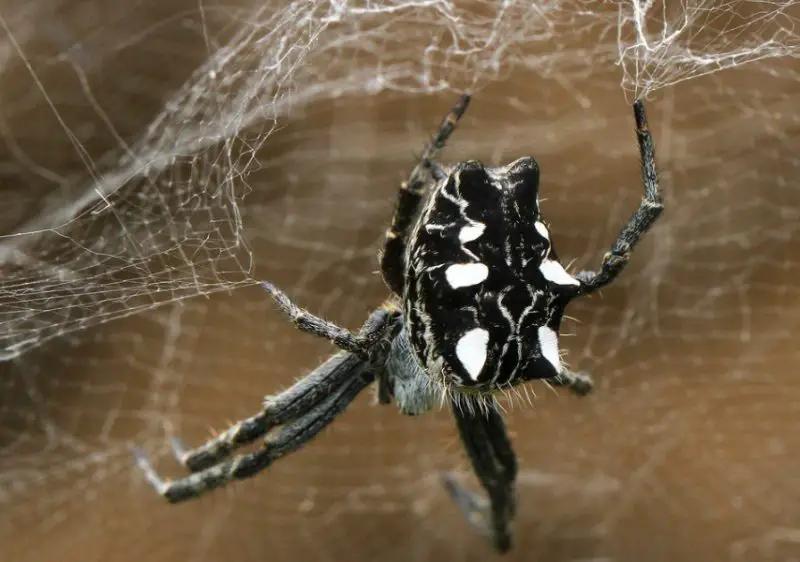
The Tropical Tent-web Spider (Cyrtophora citricola) is an orb-weaving species known for its complex, tent-like webs. Females grow up to 1 cm, significantly larger than males, which reach about 3 mm. In Florida, males are typically black, while females can change their belly color to blend into their surroundings, making them expert camouflagers.
These spiders are found in warm regions, often in gardens and forests where their webs stretch between vegetation. Their unique web structure helps them capture prey efficiently. Despite their slightly intimidating appearance, they are harmless to humans and play a vital role in insect population control.
Leaf-Curling Sac Spider
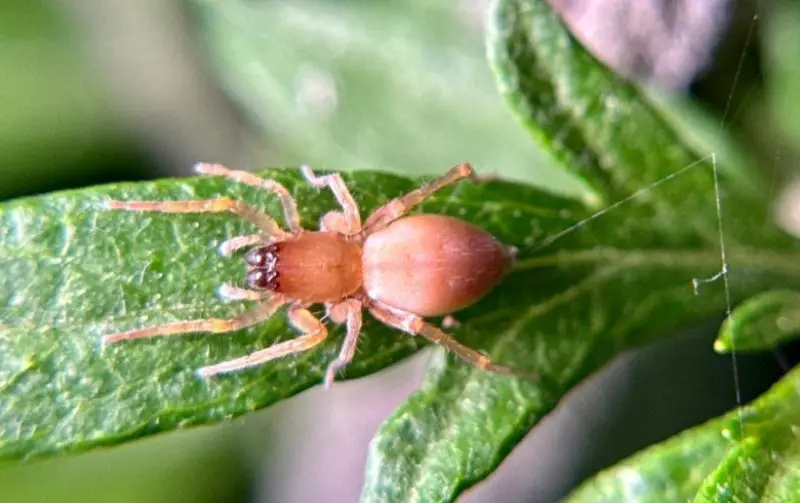
The Leaf-Curling Sac Spider (Genus Clubiona) is a widespread species found throughout the United States and many other parts of the world. These spiders are easily recognized by their light brown legs and darker body, with their head and legs appearing almost translucent under certain lighting conditions.
They are known for curling leaves to create protective retreats, where they hide during the day and hunt at night. While their bite is not dangerous, it can cause pain, irritation, and minor swelling lasting up to 48 hours. They are commonly found in gardens, forests, and even inside homes.
Metazygia zilloides
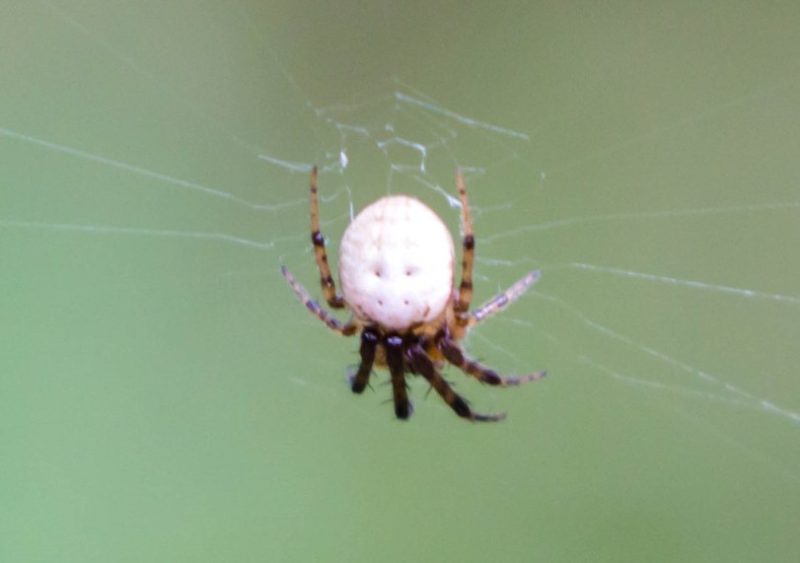
Metazygia zilloides is an orb-weaving spider from the Araneidae family, found in various states across the U.S. and throughout the Caribbean. These spiders are skilled web-builders, creating intricate structures to capture flying insects.
Females are larger than males, growing up to 6 mm in body length, while males reach around 4 mm. They are most active at night, spending daylight hours hidden in vegetation. Though often overlooked due to their small size, they play an important ecological role by helping control insect populations.
Common House Spider
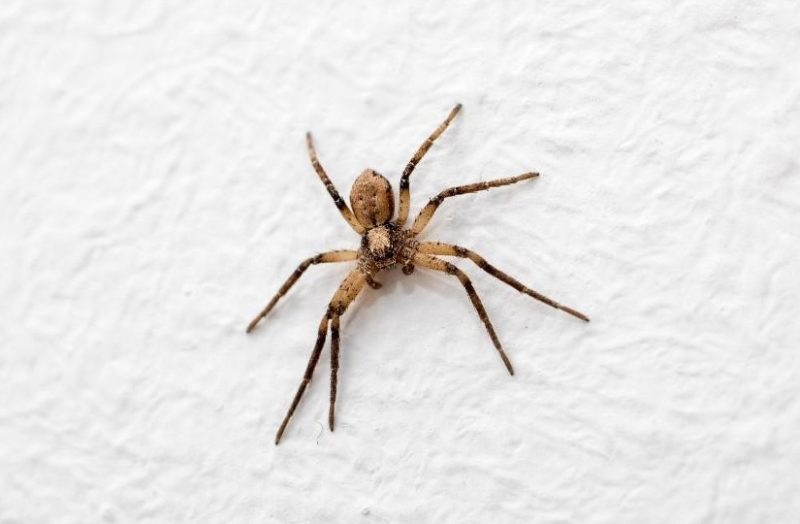
The Common House Spider (Parasteatoda tepidariorum), also called the American House Spider, is one of the most frequently encountered spiders in homes. Its coloration varies from black to tan, often with subtle patterns that allow it to blend into its surroundings. Females grow to 6 mm, while males are slightly smaller at around 4.7 mm.
These spiders are often mistaken for widow spiders due to their body shape, but they are harmless to humans. Their bites may cause mild discomfort, redness, and swelling, which typically subside within 48 hours. They are beneficial predators, helping to control household pests like flies and mosquitoes.
Walckenaer’s Trashline Orbweaver
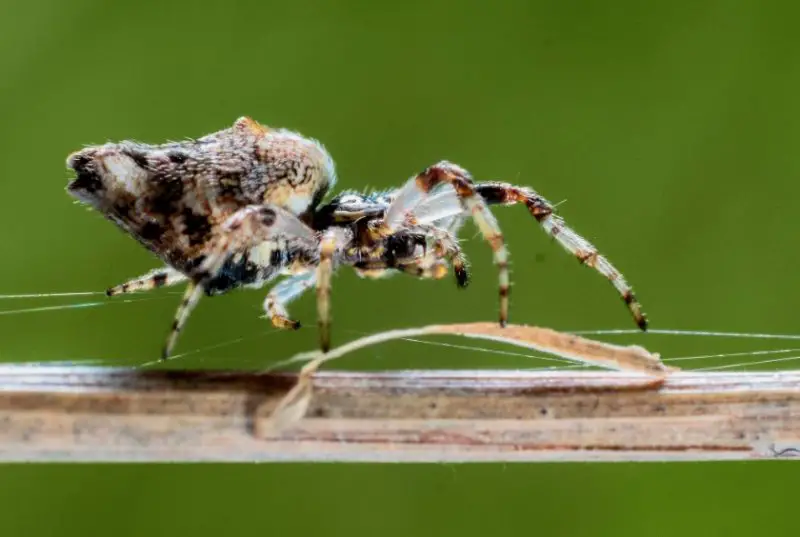
Walckenaer’s Trashline Orbweaver (Cyclosa walckenaeri) is a small orb-weaving spider from the Araneidae family, found throughout the United States and other parts of the world. First described in 1866, this species constructs circular webs, often decorating them with debris and silk stabilimenta, which serve as camouflage.
Despite their small size, these spiders are skilled at capturing flying insects. They are commonly found in gardens, forests, and other vegetated areas. Their presence helps maintain insect populations, and they pose no threat to humans.
Bifurcate Trashline Orbweaver
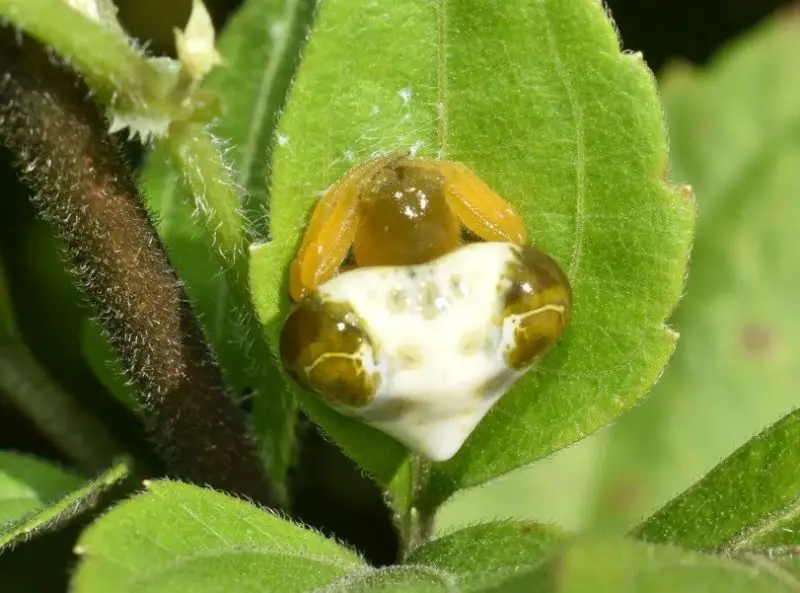
The Bifurcate Trashline Orbweaver (Allocyclosa bifurca) is a unique species known for the forked appearance of its abdomen, which forms an “M” shape. First described in 1887, it is the only species in its genus found north of Mexico. Females grow up to 9 mm, while males are much smaller at around 3 mm.
These spiders are mostly transparent green, with females displaying a reddish hue on their abdomen. They spin orb webs up to 8 inches in diameter, decorating them with silk and debris for camouflage. Males are rarely seen, as they spend little time on the web.
Rabid Wolf Spider
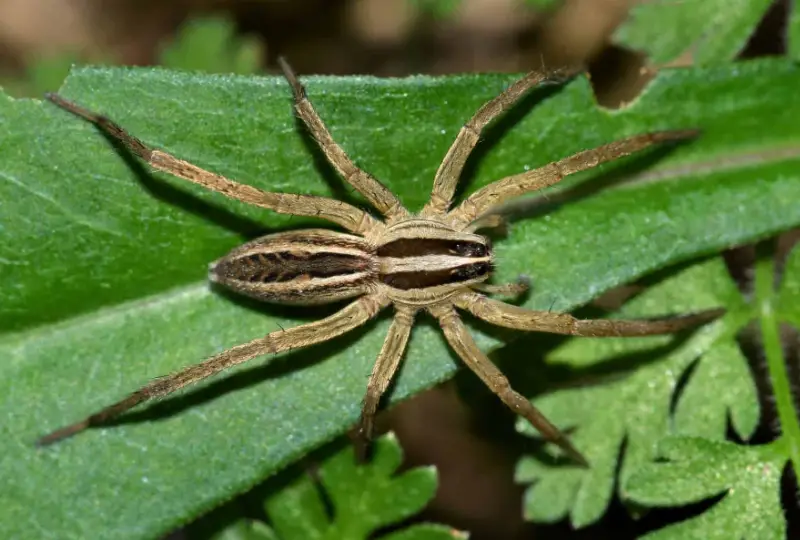
The Rabid Wolf Spider (Rabidosa rabida) is a fast-moving ground hunter identified by two dark stripes running down its yellowish-brown body. Females grow up to an inch in length, while males are significantly smaller. Their eight forward-facing eyes give them excellent vision for stalking prey.
Despite their intimidating name, these spiders are not aggressive toward humans and only bite if provoked. They do not build webs, instead relying on speed and stealth to hunt insects. They are commonly found in fields, forests, and sometimes near homes.
Tuft-legged Orbweaver
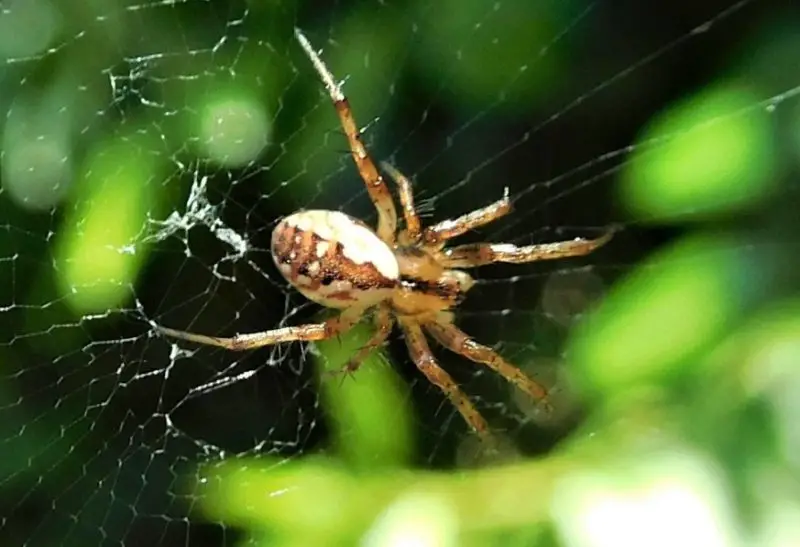
The Tuft-legged Orbweaver (Mangora placida) is an orb-weaving spider known for its finely woven vertical webs. Unlike other orb-weavers, its web has a tighter, lace-like structure with fewer gaps, making it highly effective at trapping a variety of insects.
This species is brown and blends well into its environment. It has spiky hairs on its legs that help it navigate its web without damaging it. Found in forests, shrubs, and backyard gardens, it plays an important role in controlling pollinating insect populations.
Canopy Jumping Spider
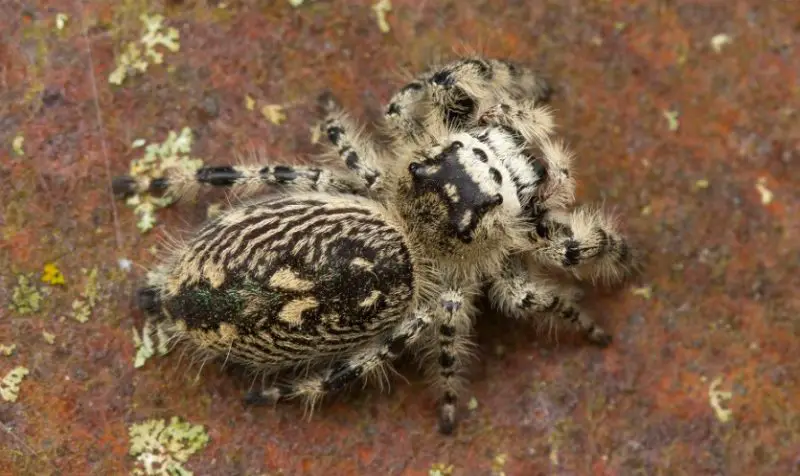
The Canopy Jumping Spider (Phidippus otiosus) is a tree-dwelling species native to the southeastern United States. Females grow up to 1.6 cm, while males are slightly smaller. Their colors range from brown, gray, white, and orange, with striking metallic green or purple fangs.
These spiders rely on their strong jumping ability to ambush prey and evade predators. Unlike web-builders, they actively hunt insects among tree canopies. Their curious nature makes them one of the more commonly observed jumping spiders in wooded areas.
Bowl-and-doily Spider
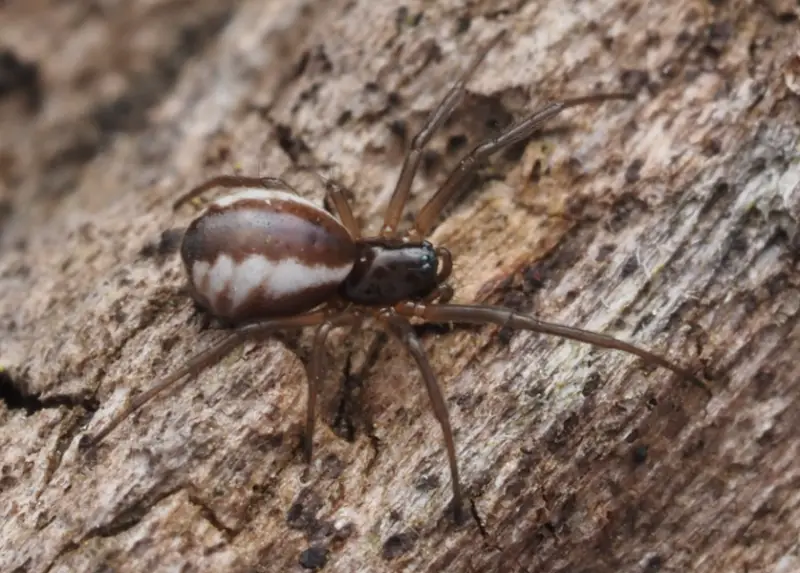
The bowl-and-doily spider (Frontinella pyramitela) is a small sheet-weaving spider that grows up to 4 mm in body length. It gets its name from the intricate structure of its web, which consists of a dome-shaped “bowl” suspended above a horizontal “doily.” This unique web design helps the spider capture small flying insects.
Unlike many other spider species, it’s not uncommon for males and females to share the same web. The spider typically hangs upside down from the bowl, waiting for prey to get trapped. Found in forests and grasslands, this species is harmless to humans.
Giant Lichen Orbweaver
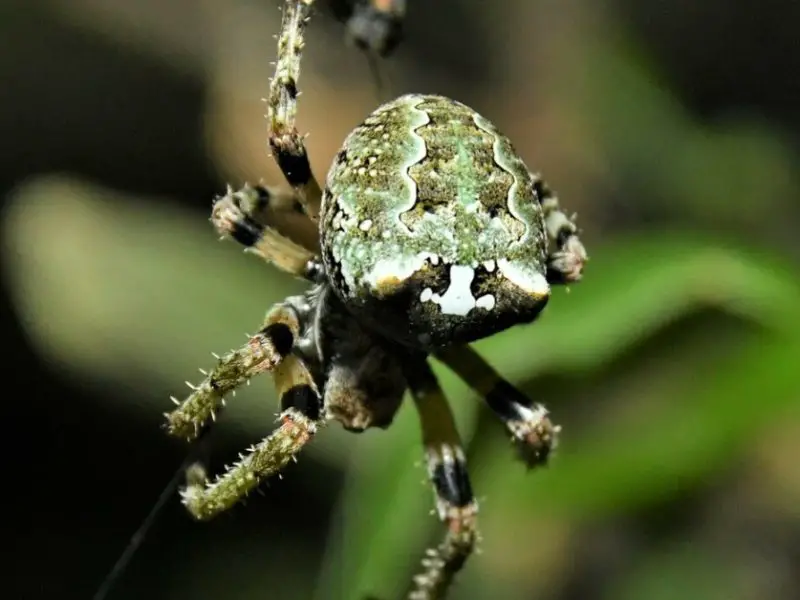
The giant lichen orbweaver (Araneus bicentenarius) is a large orb-weaving spider known for its enormous webs, which can span up to eight feet in diameter. These spiders belong to the Araneidae family and prefer wooded areas where they can attach their webs to trees and shrubs.
Despite their size, they are not aggressive and pose no threat to humans. They usually remain on the edges of their webs during the day and move to the center at night to catch flying insects. Their greenish, lichen-like coloration helps them blend into their surroundings.
White-banded Crab Spider
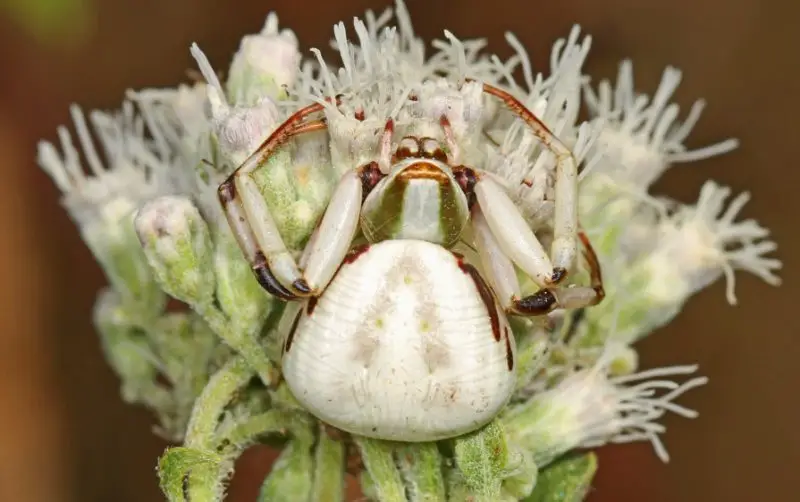
The white-banded crab spider (Misumenoides formosipes) is a sit-and-wait predator that specializes in hunting pollinating insects. It is named for the white band running across its eyes, a distinguishing feature of this species.
Females are larger than males and can change color between white and yellow to blend with their environment, while males have a golden abdomen and darker legs. These spiders do not build webs but instead use their crab-like front legs to ambush unsuspecting prey on flowers.
American Green Crab Spider
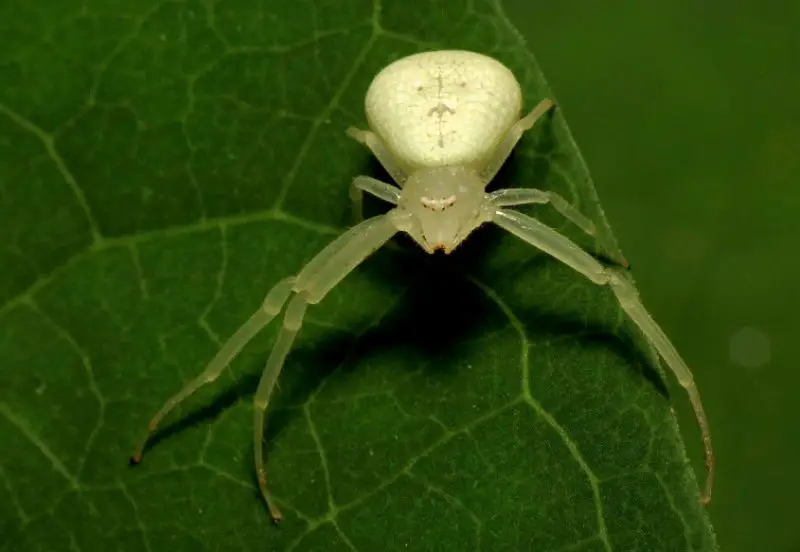
The American green crab spider (Misumessus oblongus) is a bright neon green spider with a slender body and long front legs adapted for grabbing prey. Some individuals have red bands on the sides of their abdomen, though this feature may not be present in all specimens.
Unlike most spiders, it can walk forward, sideways, and backward with ease. Highly active, it is often spotted moving across flowers and plants in search of insects. Its vibrant green coloration provides excellent camouflage among leaves and stems.
Starbellied Orbweaver
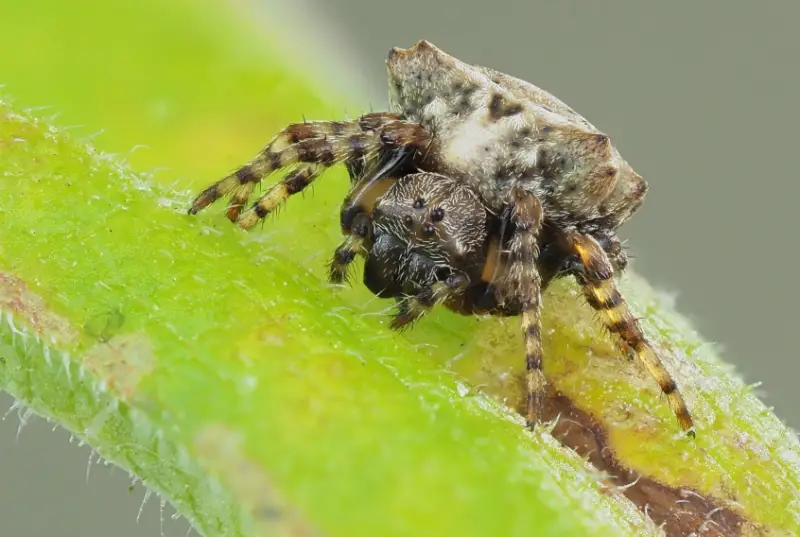
The starbellied orbweaver (Acanthepeira stellata) is an unusual spider with a spiky, star-shaped abdomen. It belongs to the Araneidae family and is primarily nocturnal, only emerging at night to build its web and hunt for flying insects.
These spiders create vertical orb webs designed to capture airborne prey. Because they remain hidden during the day, they are rarely seen, and little is known about their behavior. They are harmless to humans and contribute to natural insect control.
Heptagonal Orbweaver
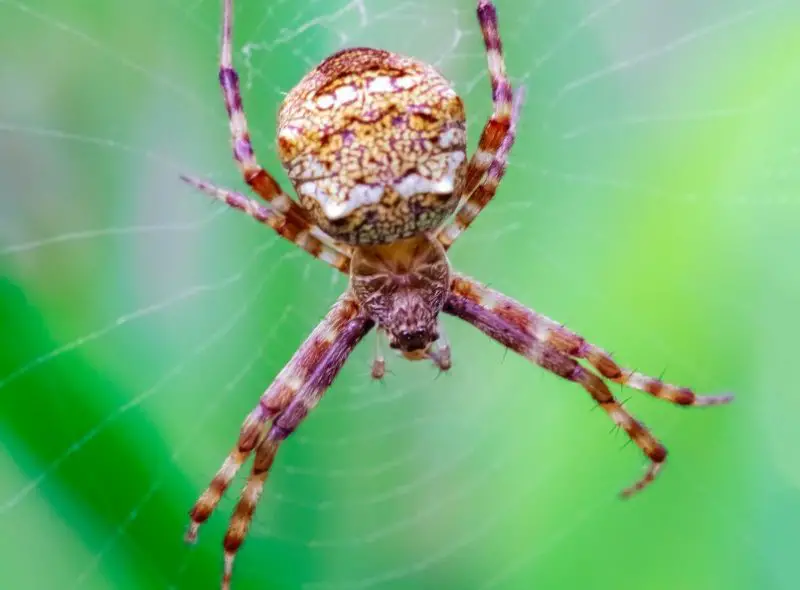
The heptagonal orbweaver (Gea heptagon) is a small, yellow and brown spider recognized for its unique posture—hanging head-down with its legs forming an X shape. It constructs a small, wheel-shaped web where it patiently waits for prey.
Females have a large head and a gray to tan body with a brown abdomen decorated with white and gold markings. A dark red to black triangular marking near the back is a distinctive feature. When viewed from above, their body appears to have seven sides. Males are slimmer and lighter in color, with both sexes growing to about a quarter of an inch.
Basilica Orbweaver
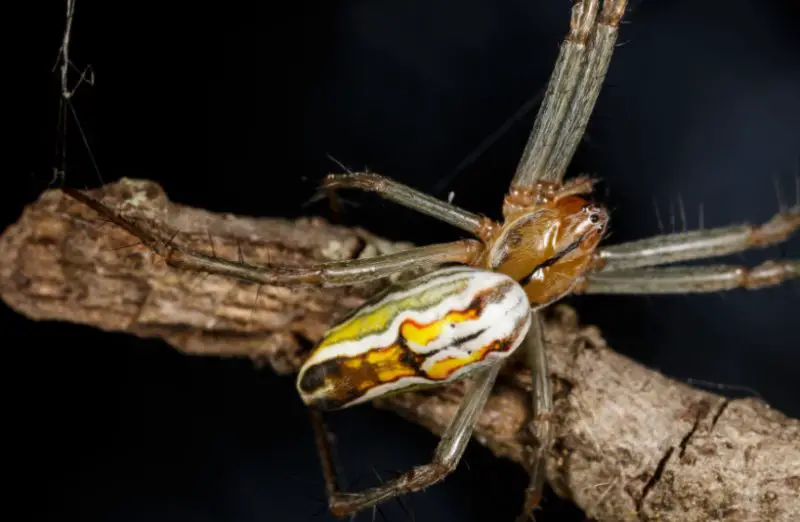
The basilica orbweaver (Mecynogea lemniscata) is an easy-to-identify spider due to its striking yellow, orange, and green coloration. The sides of its abdomen are green with white dots, while the back has white and orange lines. A black stripe runs down its “neck,” giving it a distinctive appearance.
This species builds intricate dome-shaped webs, resembling the top of a cathedral, which is how it gets its name. Sticky traps dangle inside the dome to catch prey. Active mostly in late spring and early summer, these spiders prefer garden areas and open fields.
Goldenrod Crab Spider
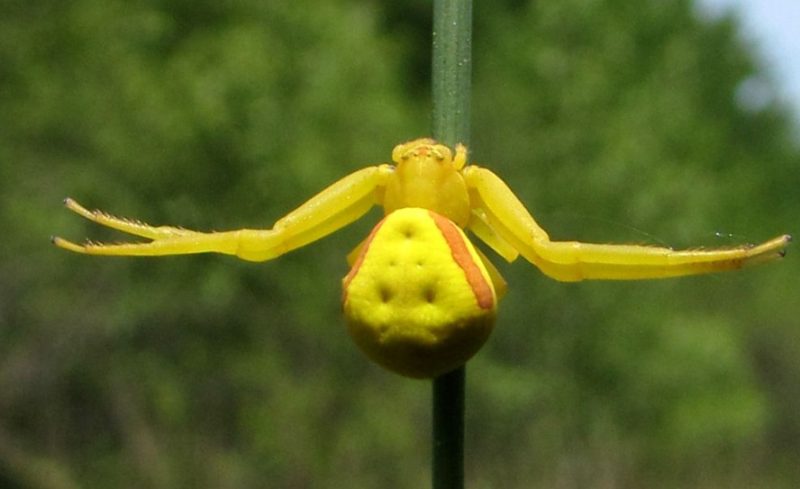
The goldenrod crab spider (Misumena vatia), also known as the flower crab spider, has a flat, wide body with a crab-like stance. It can walk forwards, backward, and sideways, using its long front legs to capture prey.
These spiders are harmless to humans, as their bite cannot penetrate human skin. They can change color from white to yellow depending on the flowers they hunt on, though the process takes up to twenty-five days. They are most often found on bright yellow flowers, where they camouflage themselves to ambush pollinating insects.
South American Toothed Hacklemesh Weaver
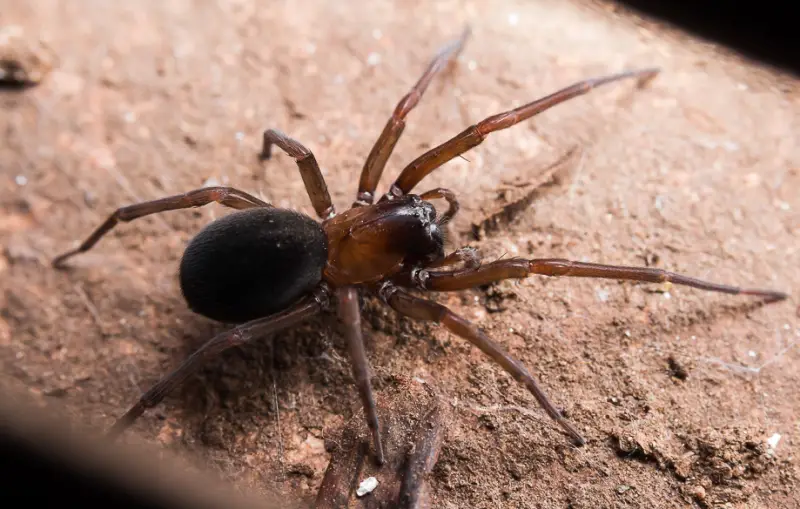
The South American toothed hacklemesh weaver (Metaltella simoni) is a brown spider native to South America but now found in parts of the United States. Females grow to about 9 mm, while males reach 8.5 mm.
Their abdomens are typically gray to dark gray with pale chevron markings toward the back. Males have a distinctive yellow to orange area on the rear of their carapace. These spiders are commonly found in leaf litter and under rocks, where they build irregular, tangled webs.
Dark Fishing Spider
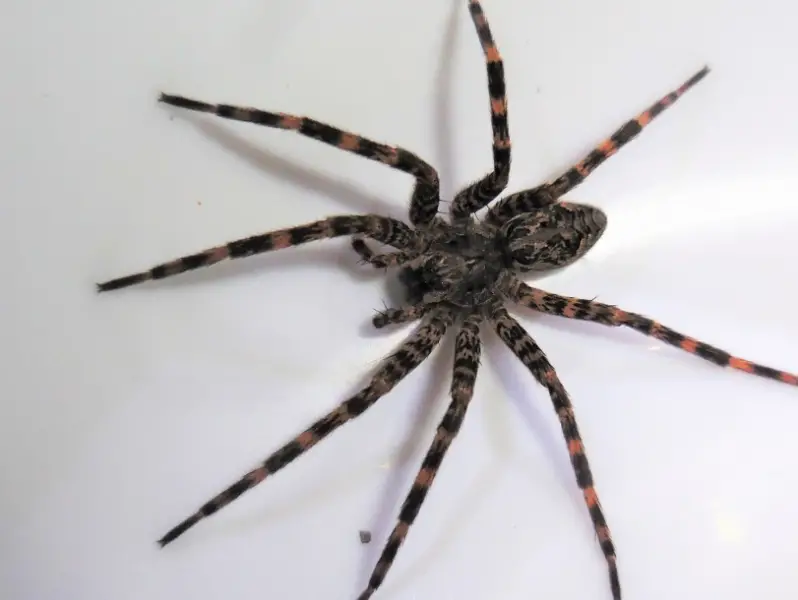
The dark fishing spider (Dolomedes tenebrosus) is a large, dark brown spider with chevron patterns on its body and lighter stripes around its banded legs. It prefers wooded areas and is often found resting on tree trunks.
Females can reach 2.6 cm in body length, while males grow to about 1.3 cm. Their legs can span up to 9 cm, making them one of the larger fishing spider species. Despite their size, they are not aggressive toward humans and will usually flee when approached.
Straight-banded Nursery Web Spider
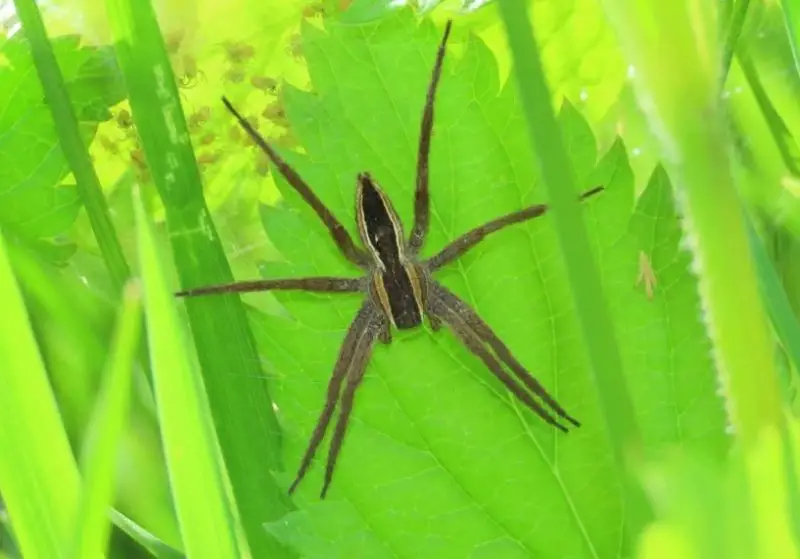
The straight-banded nursery web spider (Pisaurina brevipes) belongs to the araneomorph spiders, first described in 1890. It closely resembles wolf spiders, but unlike them, females carry their egg sacs with their jaws until they are ready to hatch. At that point, the mother constructs a protective nursery tent and guards her young.
These spiders do not build webs to catch prey but instead are active hunters. They have excellent agility, capable of walking on water, diving beneath the surface, and jumping distances of up to six inches. Adults reach about 1.5 cm in length, with males having longer legs than females.
Northern Yellow Sac Spider
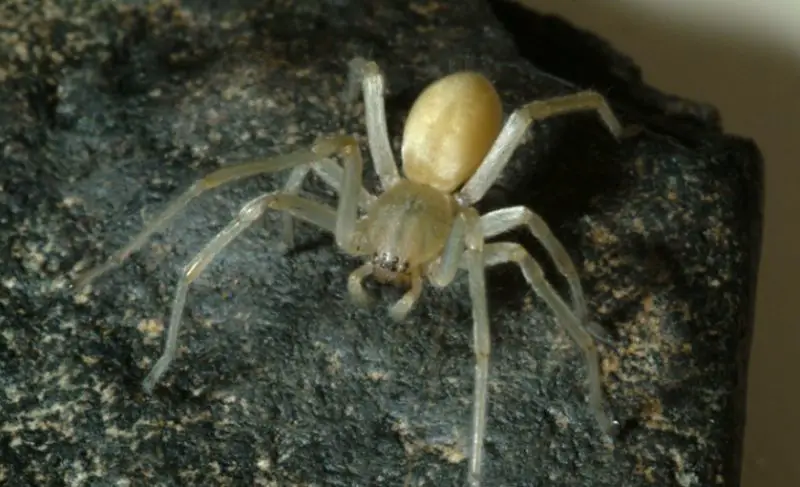
The northern yellow sac spider (Cheiracanthium mildei) is a small, agile hunter with a tan to pale green body and dark brown markings. It grows to about 1 cm in body length and is known for its distinctive front legs, which are nearly twice as long as the others.
These spiders have excellent vision and do not rely on webs to catch prey. While they can bite if threatened, their venom is not dangerous to humans, typically causing only mild irritation at the bite site. They are often found indoors, where they hunt small insects.
Lined Orbweaver
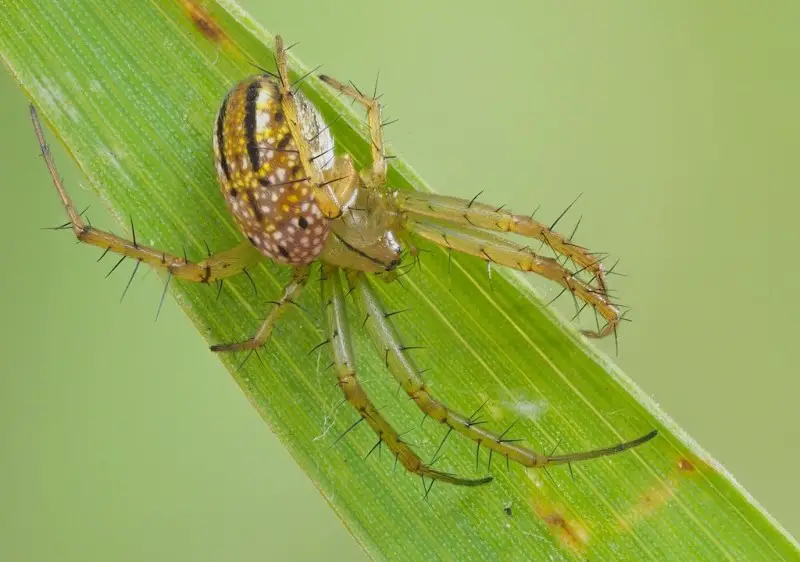
The lined orbweaver (Mangora gibberosa) is a delicate spider with a light brown, green, or white body covered in fine, translucent hairs. Its abdomen is round with yellow, green, or white markings on the sides, and it features two dark brown lines on its back, along with a central black stripe on the carapace.
These spiders grow to about 6 mm, with females being 30% larger than males. They spin small, intricate webs to catch flying insects. Non-aggressive and harmless to humans, they are commonly found in gardens and wooded areas.
Wall Spider
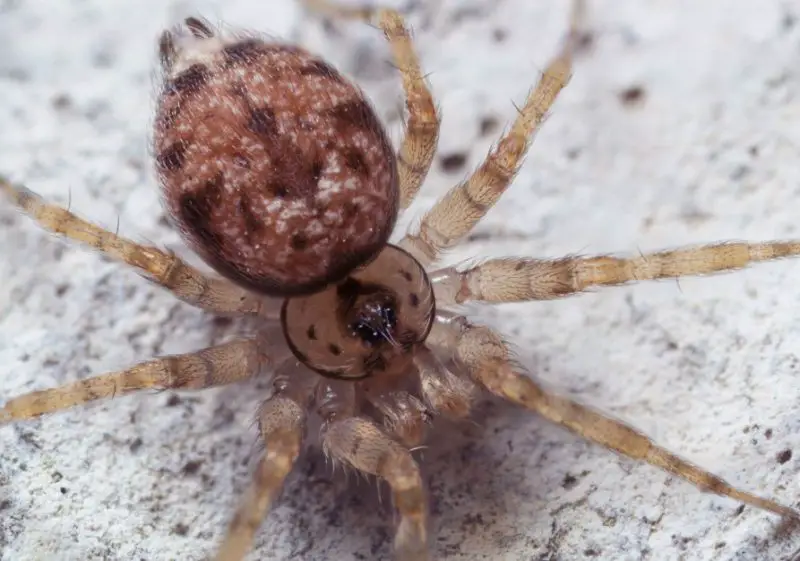
The wall spider (Oecobius navus) is a tiny, light gray arachnid with darker legs, reaching just 3 mm in size. It constructs flat, circular webs in hidden places such as under rocks, ceilings, and wall corners.
These spiders are highly reclusive and rarely bite. Their small size and non-aggressive nature make them an unnoticed but beneficial presence in homes, where they help control insect populations.
American Nursery Web Spider
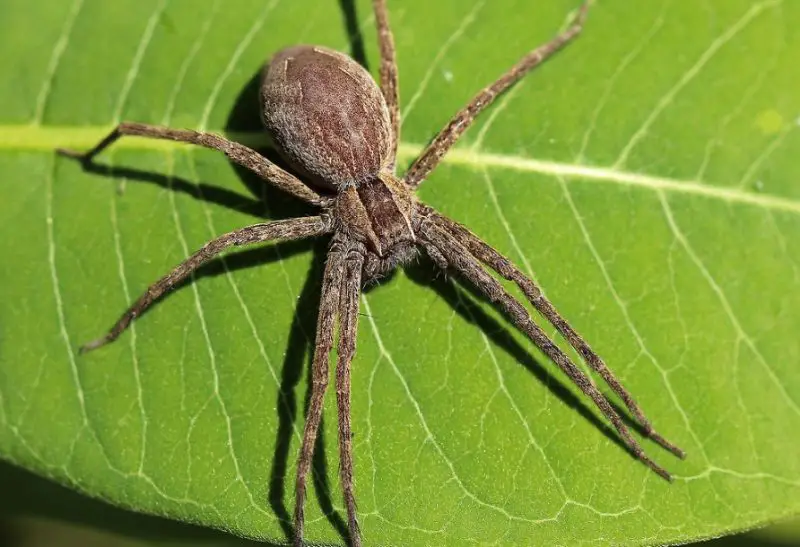
The American nursery web spider (Pisaurina mira) is a strong and agile hunter with a long abdomen and a protective hard outer layer. It has eight eyes arranged in two rows and is known for its diverse patterns, ranging from dark median bands to no banding at all, though all individuals have two rows of lateral spots.
Females are larger than males, but males have longer legs. These spiders do not rely on webs for hunting but are skilled at ambushing prey. Like other nursery web spiders, females carry their egg sacs until hatching, at which point they construct a protective silk nursery for their young.

